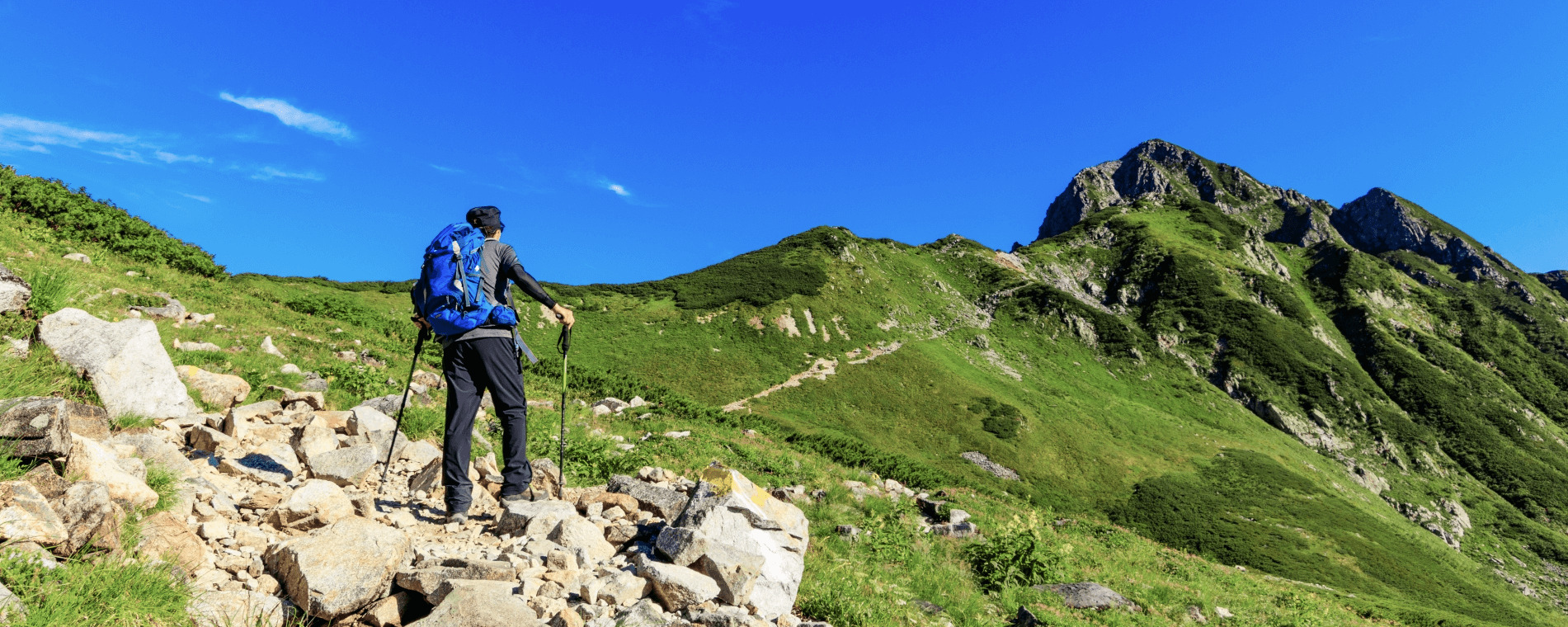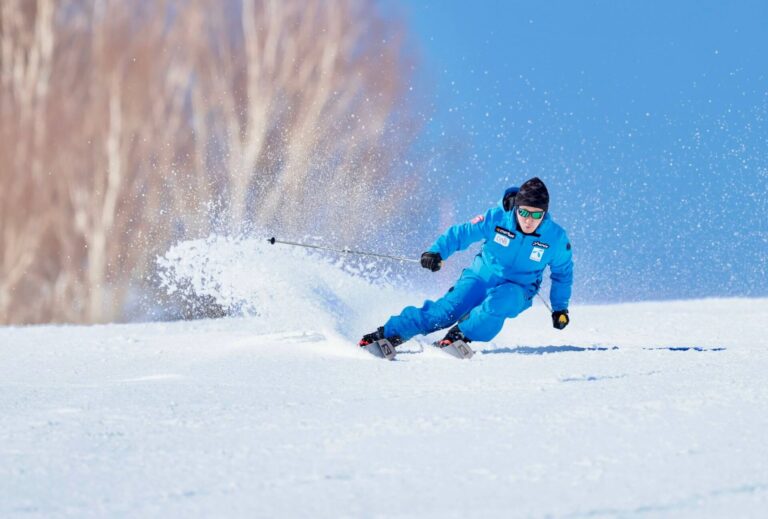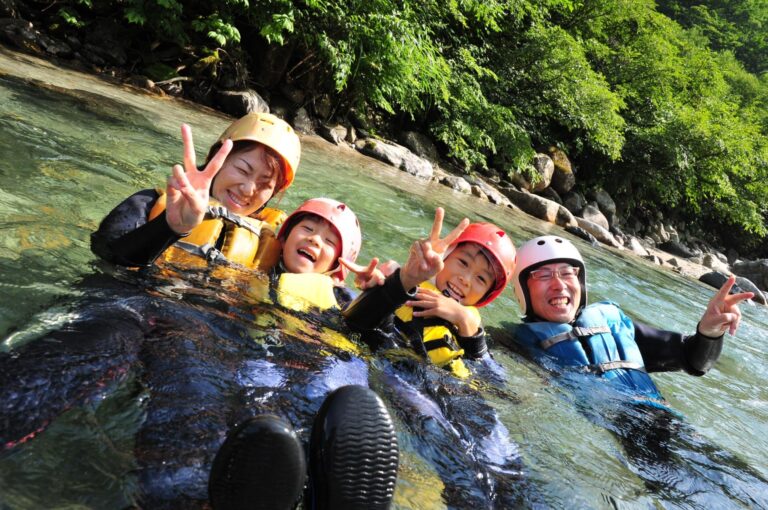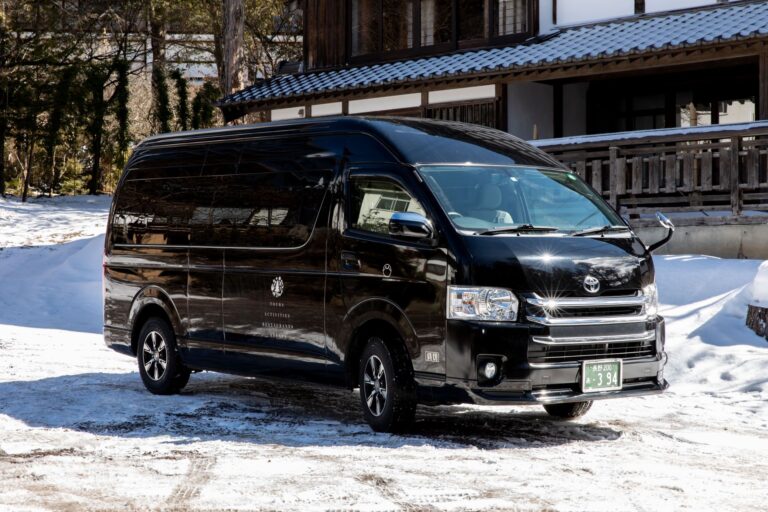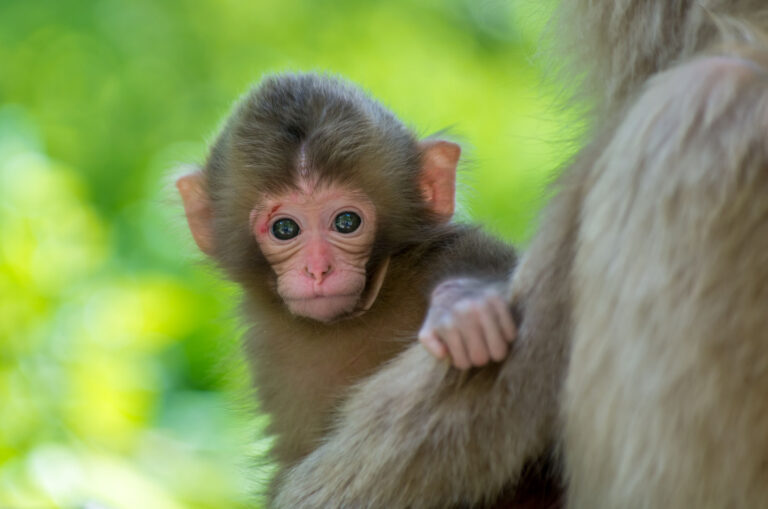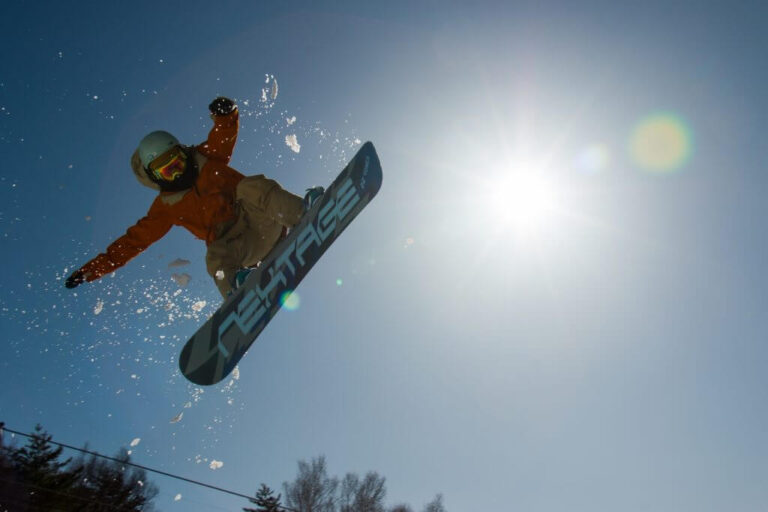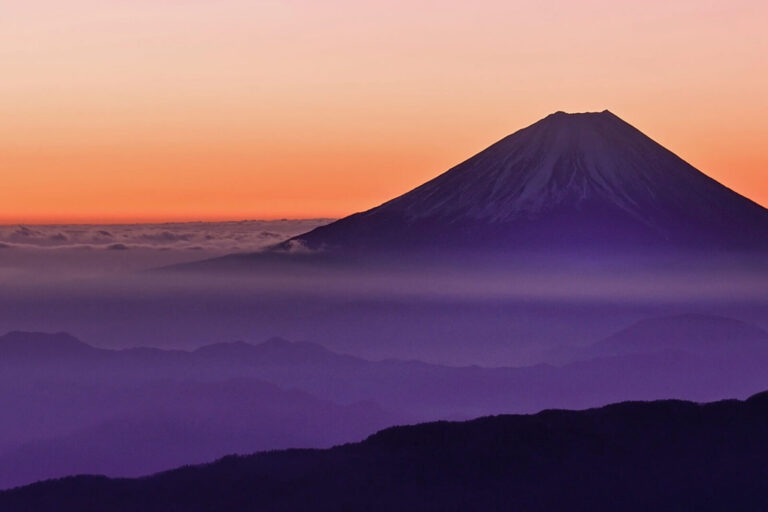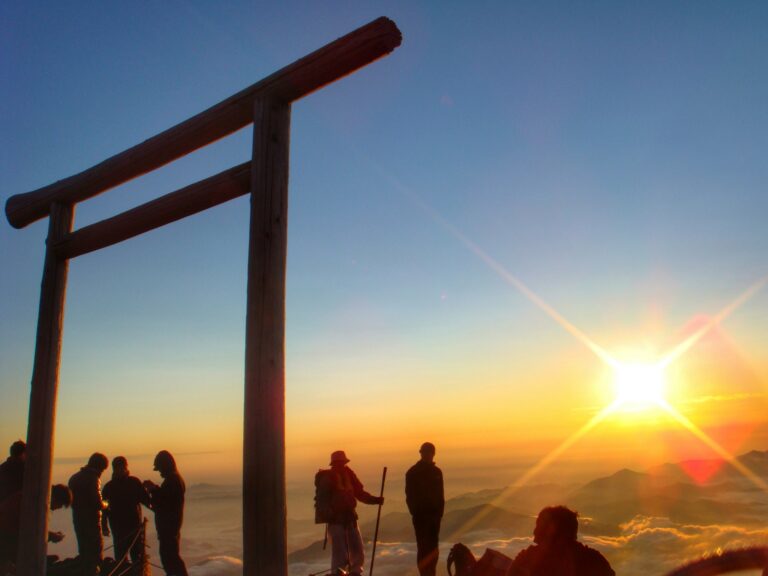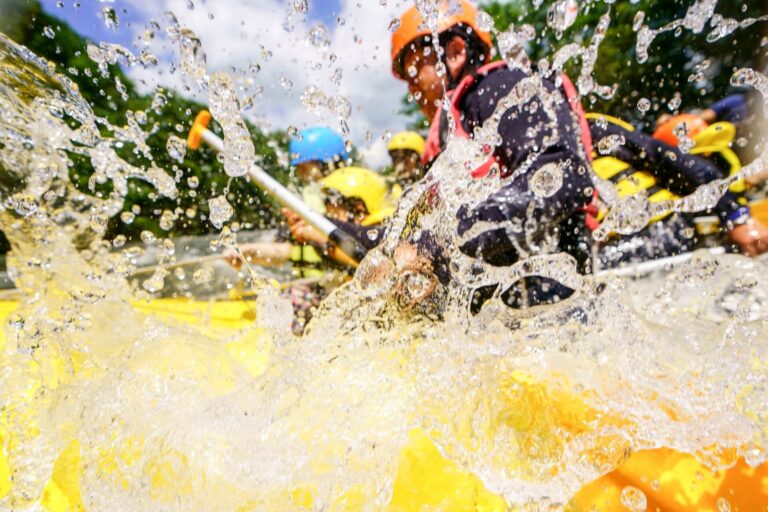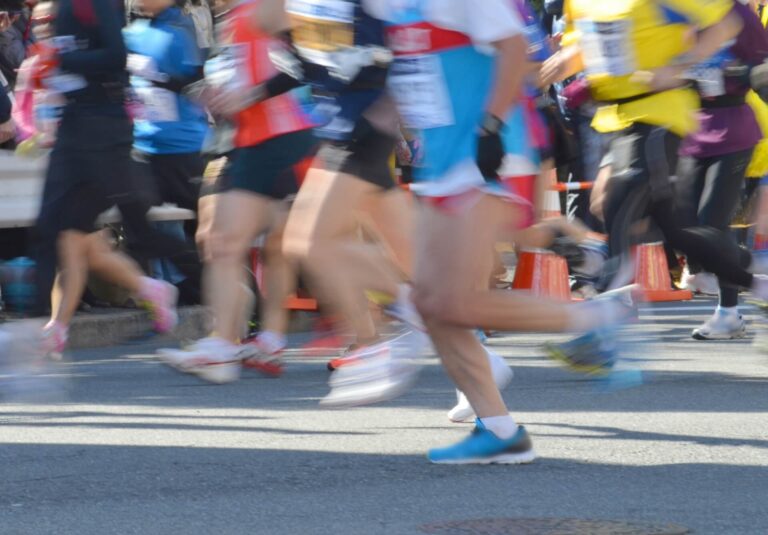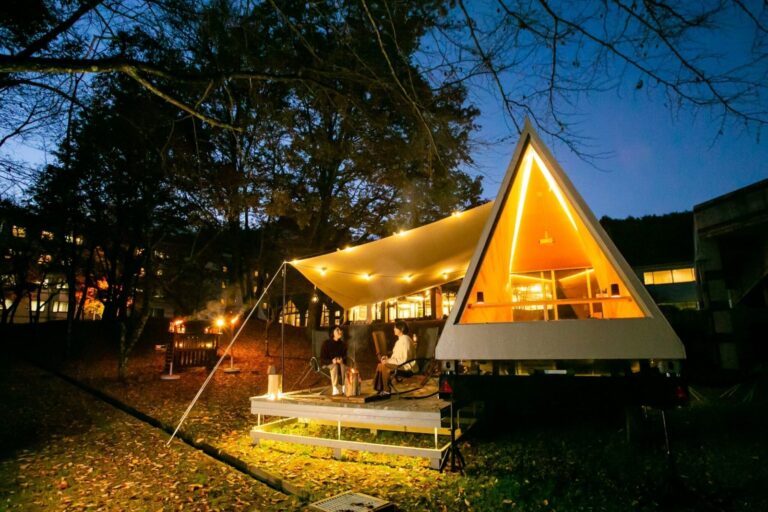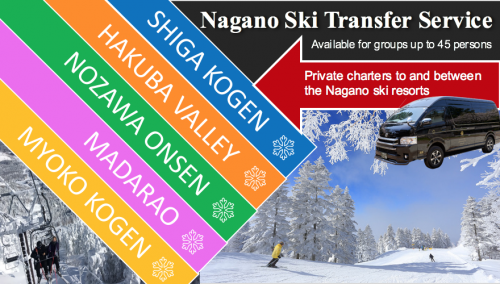Japan Adventure Travel: Wildlife, Bird-Watching, Horse-Riding & Fishing
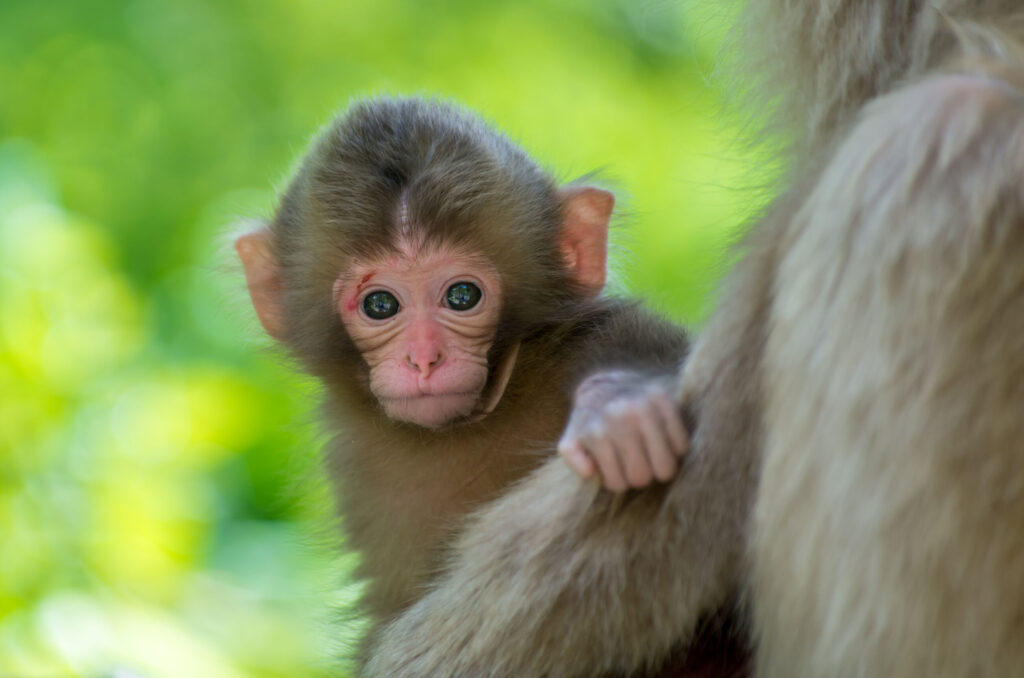
Stretching over 3000km from north to south and including more than 6,000 islands, the archipelago of Japan is home to a diverse range of wildlife. Occupying the varied landscapes and climates found across the country – from the tropical south, to the high alpine environments of Central Japan and the deep cold and snow of the north – the animals you will encounter while here depend on which area you are headed to.
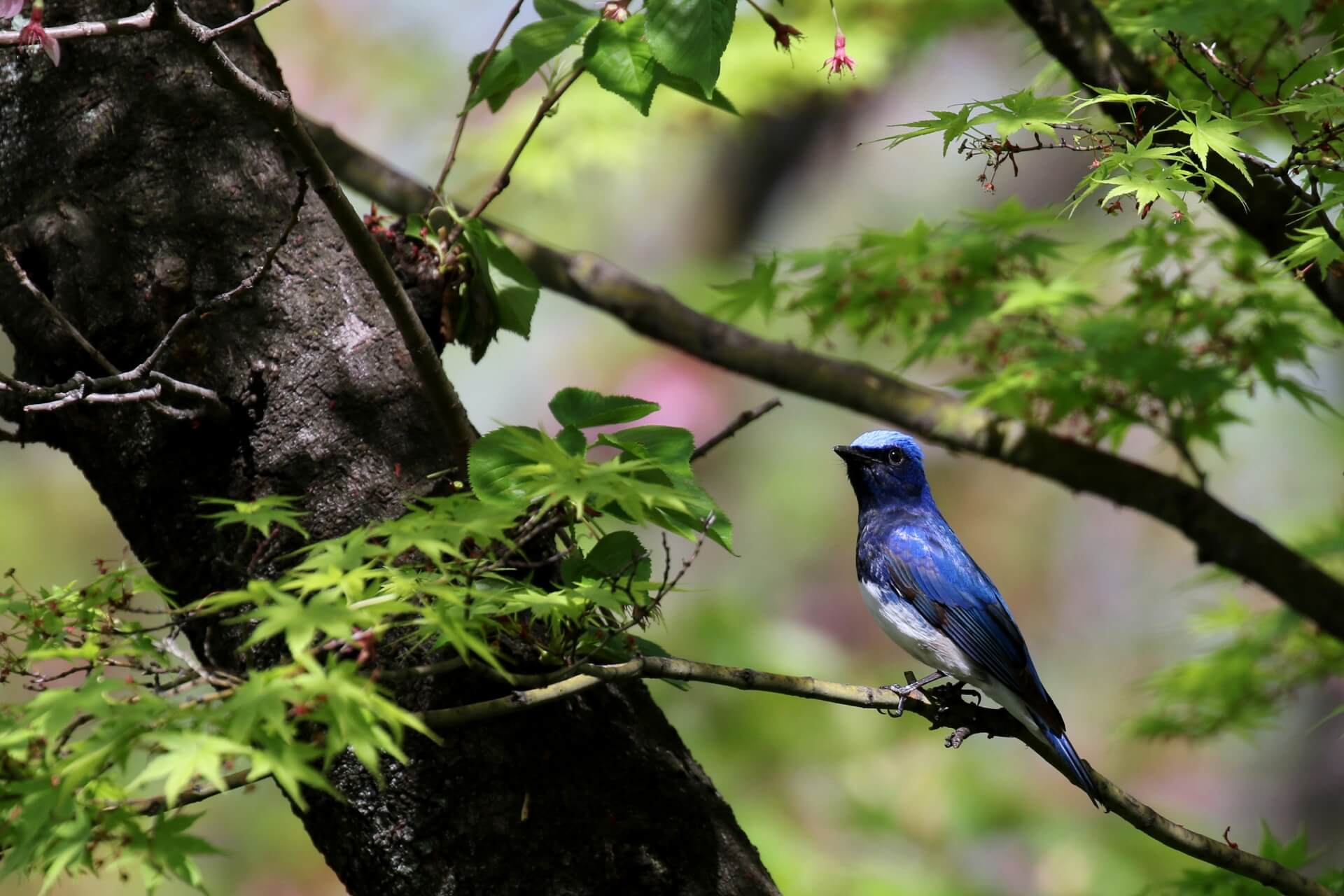
Based in Nagano, Central Japan is our home and as such, we’d like to introduce you to some of the wildlife you’ll find here including our recommendations of the best wildlife and bird-watching experiences. On this page you will find the following information:
2 / Recommended Wildlife Experiences
3 / Recommended Bird-Watching Experiences
4 / Recommended Horse-Riding Experiences
5 / Recommended Fishing Experiences
6 / Book With Us! Nagano’s No.1 Tour & Charter Operator
For more travel adventures experiences and destinations, see our main ‘Japan Travel Adventure’ page. We hope this information is helpful in planning your next adventure in Japan.
1 / WILDLIFE OF CENTRAL JAPAN
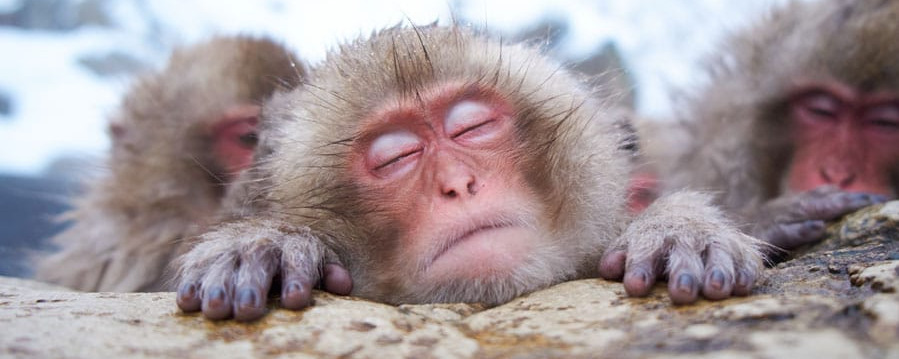

Central Japan is home to a diverse range of animals and birds making it a great destination for photographers or anyone just wanting to enjoy the natural side of this fascinating country. Here are some of the many animals waiting to be discovered, obviously starting with our favourites:
Japanese Macaque
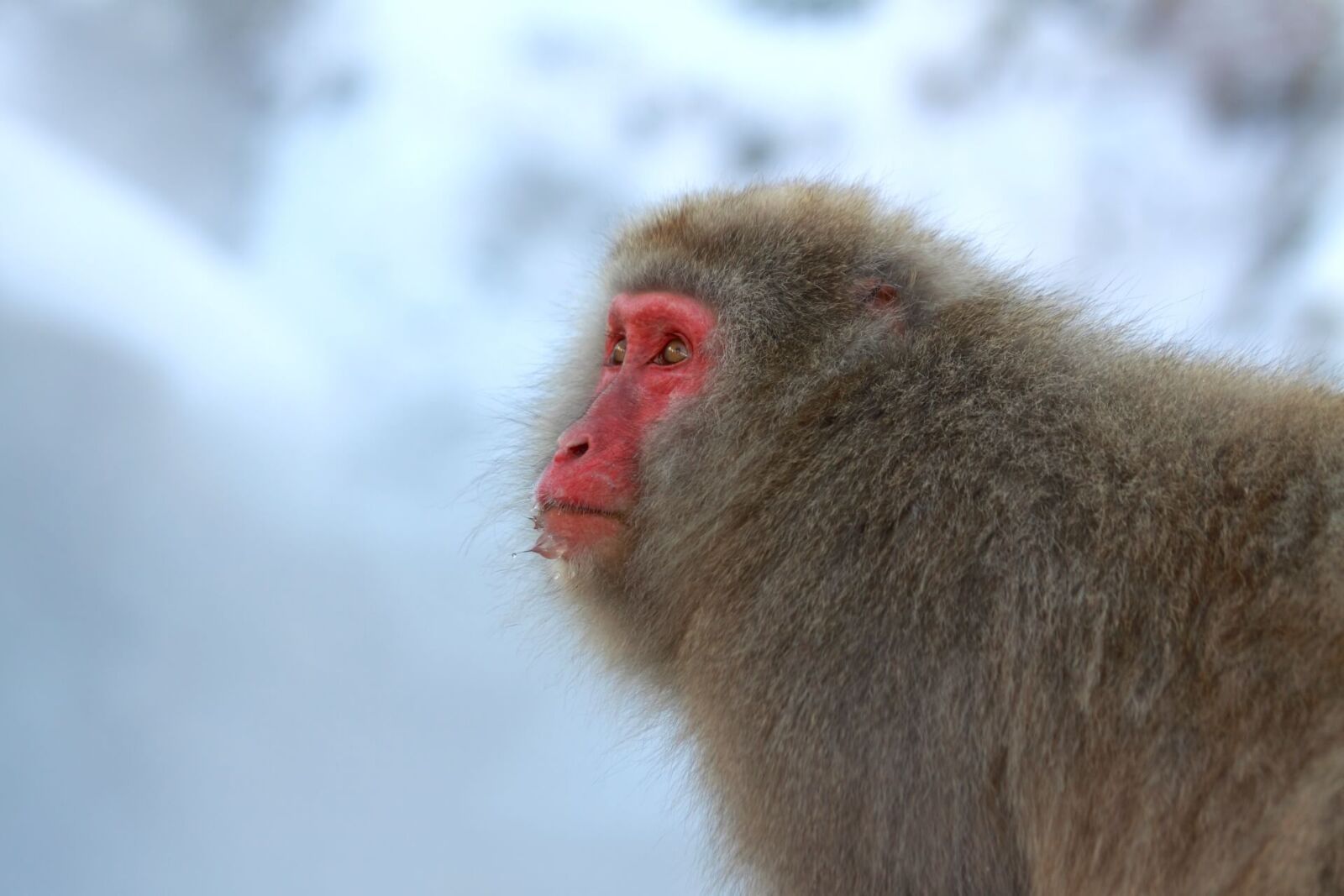
Properly referred to as ‘nihonzaru’ (Japanese monkey) but more often simply referred to as ‘snow monkeys’, Japanese macaques are found throughout the country, from the sub-tropics of the south to the cold and snow of the north. Highly intelligent, adaptable and social, macaques live in troops of around 150 members following an alpha-male. They are territorial and typically move within a radius of several kilometres on a daily basis and can be found in many areas in Central Japan including Joshinetsu Kogen National Park, Shiga Kogen Highlands and around Hakuba. Famous for their hot spring-loving antics, that behaviour is unique to the troop that comes and goes to the Jigokudani Monkey Park – a sight you will only see there. The unofficial ambassadors of the region, the snow monkeys come to the park at all times of year.
Asiatic Black Bear
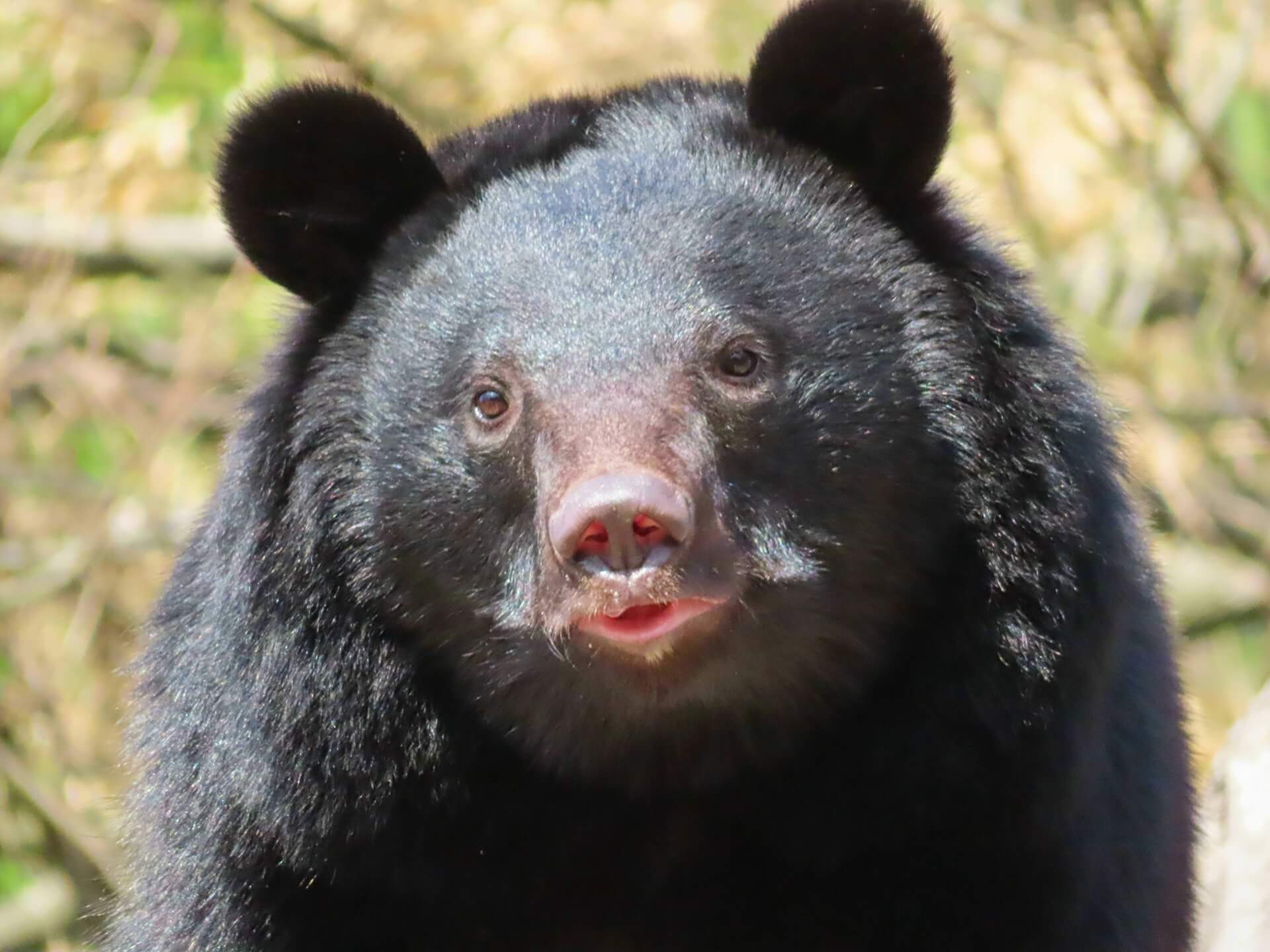
Mostly found in the forests and mountains of national parks, the Asiatic black bear is typically herbivorous and shy, meaning that it is usually little threat to humans. Once mature they reach around 120 to 140cm in length, with males weighing between 60 to 120kg and females weighing between 40 to 100kg. Smaller than many species of bear, they are most active from spring to autumn and hibernate through winter. National media somewhat vilifies bears following some incidents across the country, typically the result of a bear being taken by surprise and the continued encroach of humans on their habitat. While such incidents are not be ignored, the reality is that the bears are shy and while there are plenty in national parks including Joshinetsu Kogen and Myoko-Togakushi Renzan, they are rare to see.
Japanese Serow
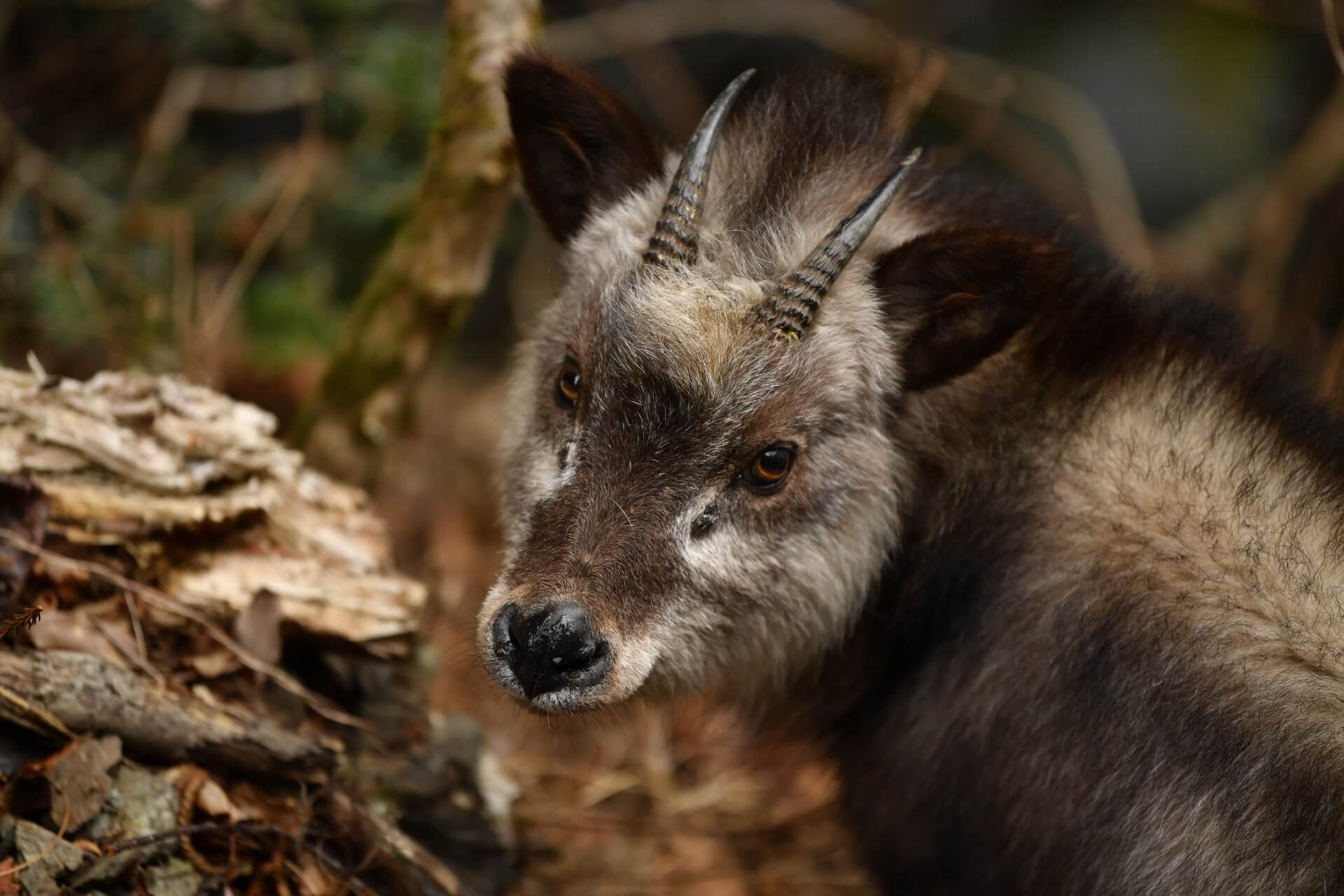
Known as ‘kamoshika’ in Japanese, is a type of goat-antelope found throughout the park. Mature kamoshika stand around 80 centimetres tall and weight 30 to 45kg and have thick black-grey coats that lighten in colour during summer. They have short horns and tails and are typically seen alone or with a partner and infant. Kamoshika are slow moving and blend into the landscape well, meaning that many visitors pass-by them without noticing. So keep your eyes open as sooner or later you’ll encounter one and seem as curious about us as we are about them.
Spotted Deer
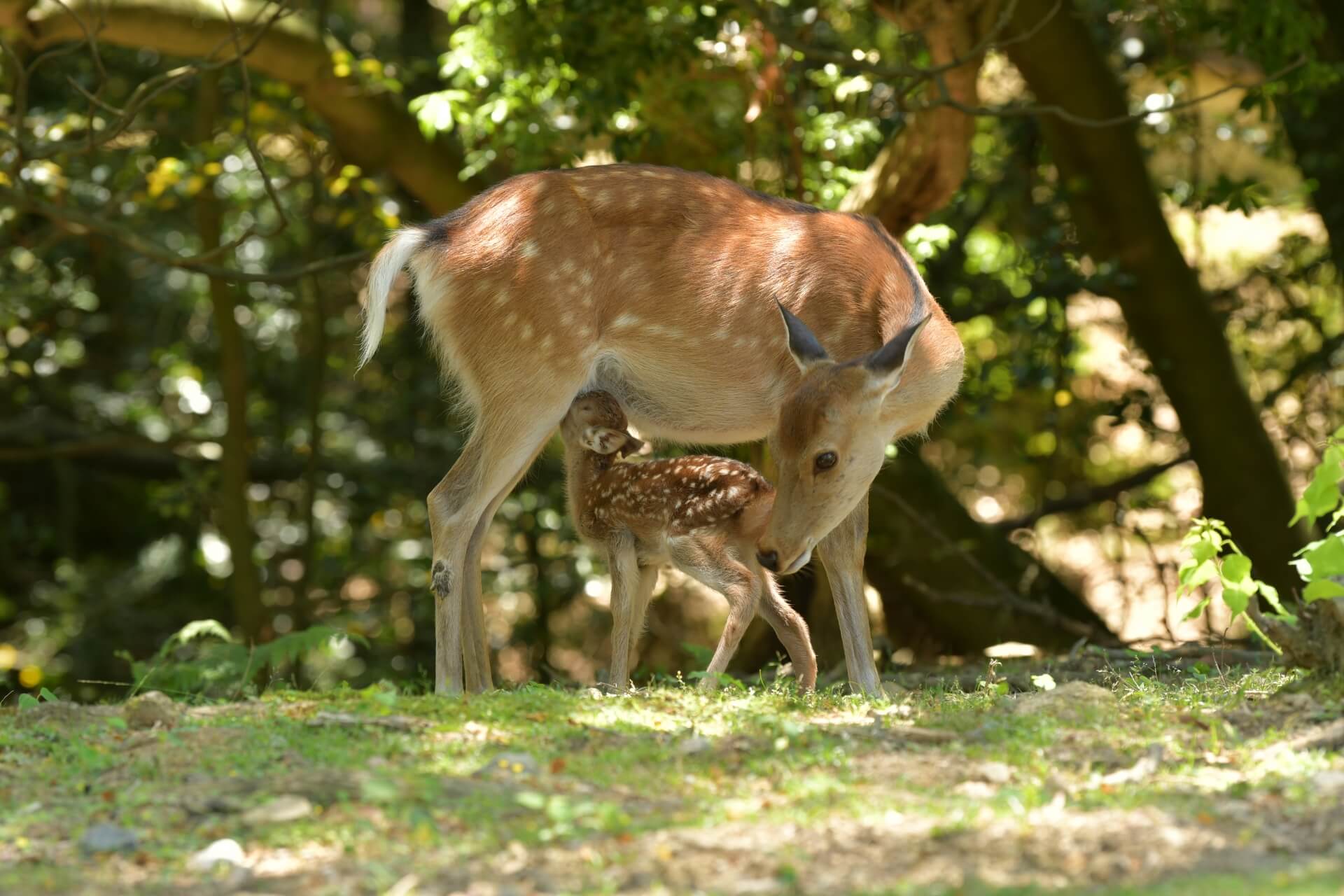
Known simply as ‘shika’, spotted deer are found-out in various countries through Asia. These medium-sized deer are somewhat unique in that they often keep their spots through adulthood, with mature shika standing between 50 to 110cm tall at the shoulders and 95 to 180 tall in full head-to-tail length. Mature stags have antlers while mature females have distinctive black bumps on their foreheads. Wild shika are typically timid but typically active through the day, so are not uncommon to see.
Tanuki
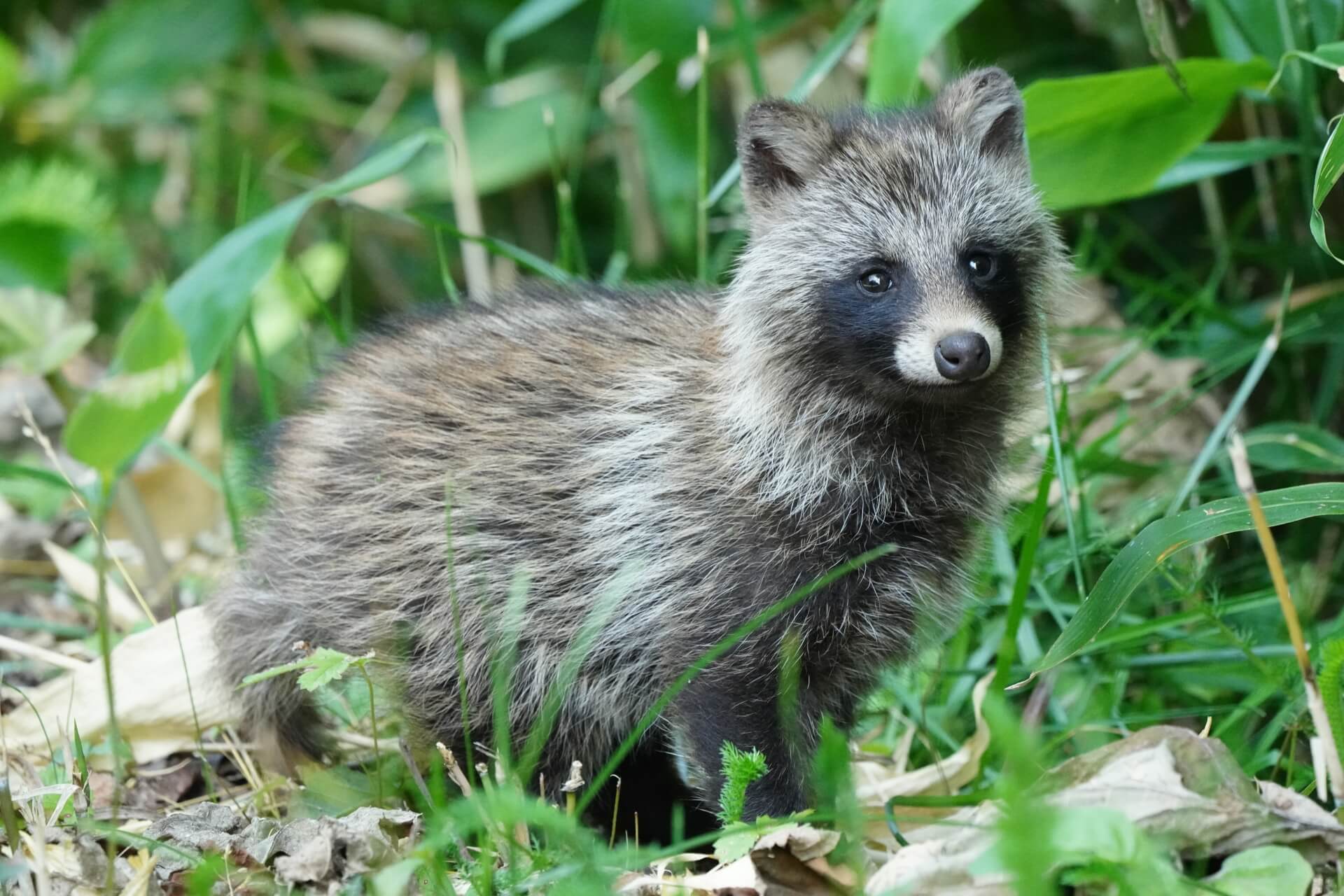
Also referred to as a ‘raccoon dog’, tanukis can be found throughout Central Japan. A highly adaptive animal, they are mostly nocturnal however it isn’t unusual to spot them during them day. They are in fact more closely-related to foxes and wolves than to raccoons. They are highly social but are typically seen together as mating pairs and are somewhat unique for a type of canine in that they hibernate through winter. The tanuki plays an important role in Japanese folklore with many stories considering them as a type of ‘yokai’ or supernatural beings, spurring their popularity as ‘sake’-carrying statues often seen at the front of homes and businesses in Japan.
Japanese Badger
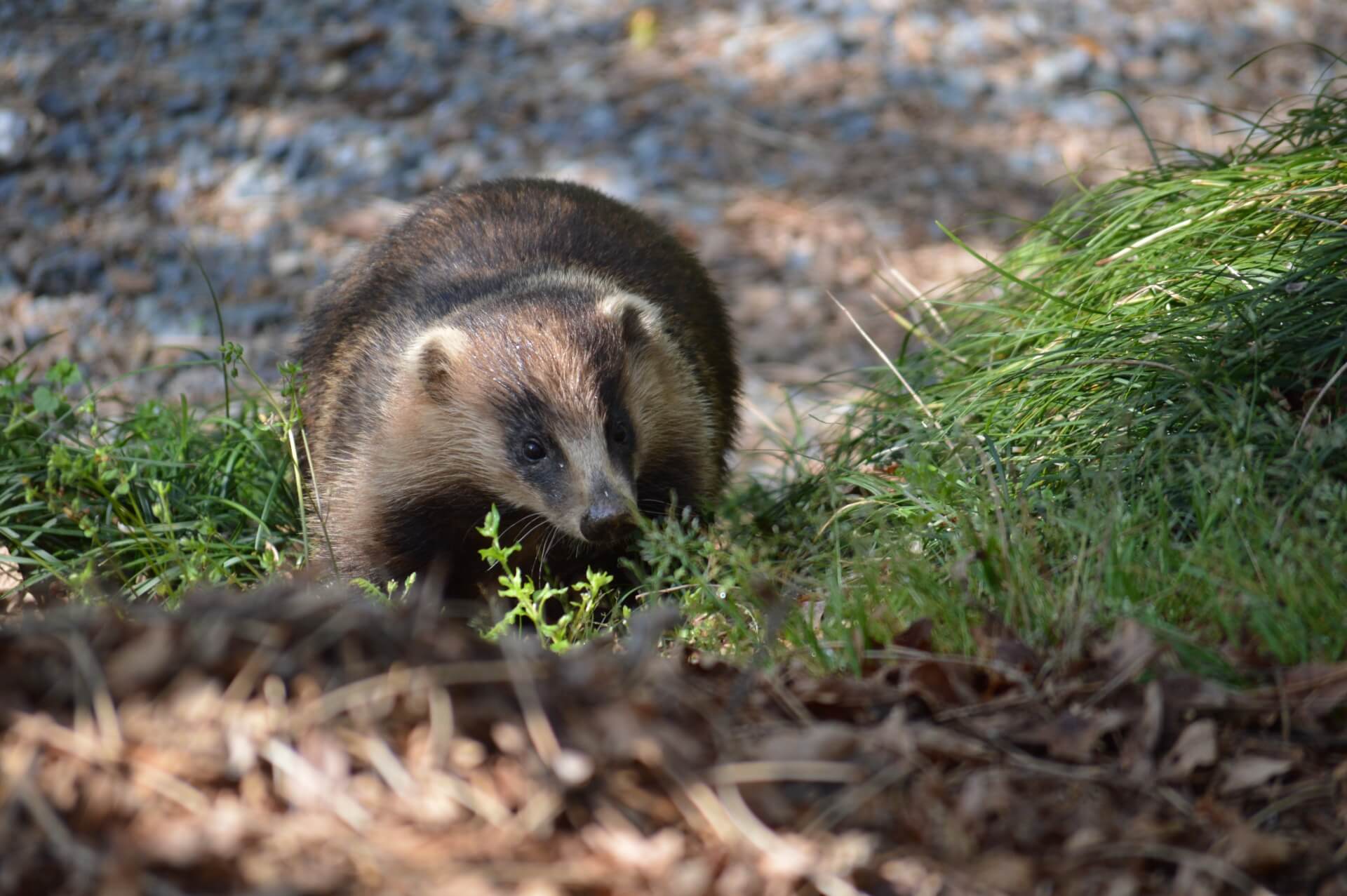
Known locally as ‘anaguma’, Japanese badgers can be found in forested areas throughout Central Japan and are sometimes mistaken for tanuki. Also referenced in Japanese folklore, anaguma were said to be able to shape-shift and take on human form. While there’s no evidence of this you never can be too careful so keep an eye-out for anyone suspicious. When in badger form they smaller than their European cousins, with males measuring up to 79cm and females around 72cm. Much like tanuki, anaguma are most active at night and hibernate through the winter occupying wooded habitats including near human populations and through the forests of the region’s national parks.
Japanese Squirrel
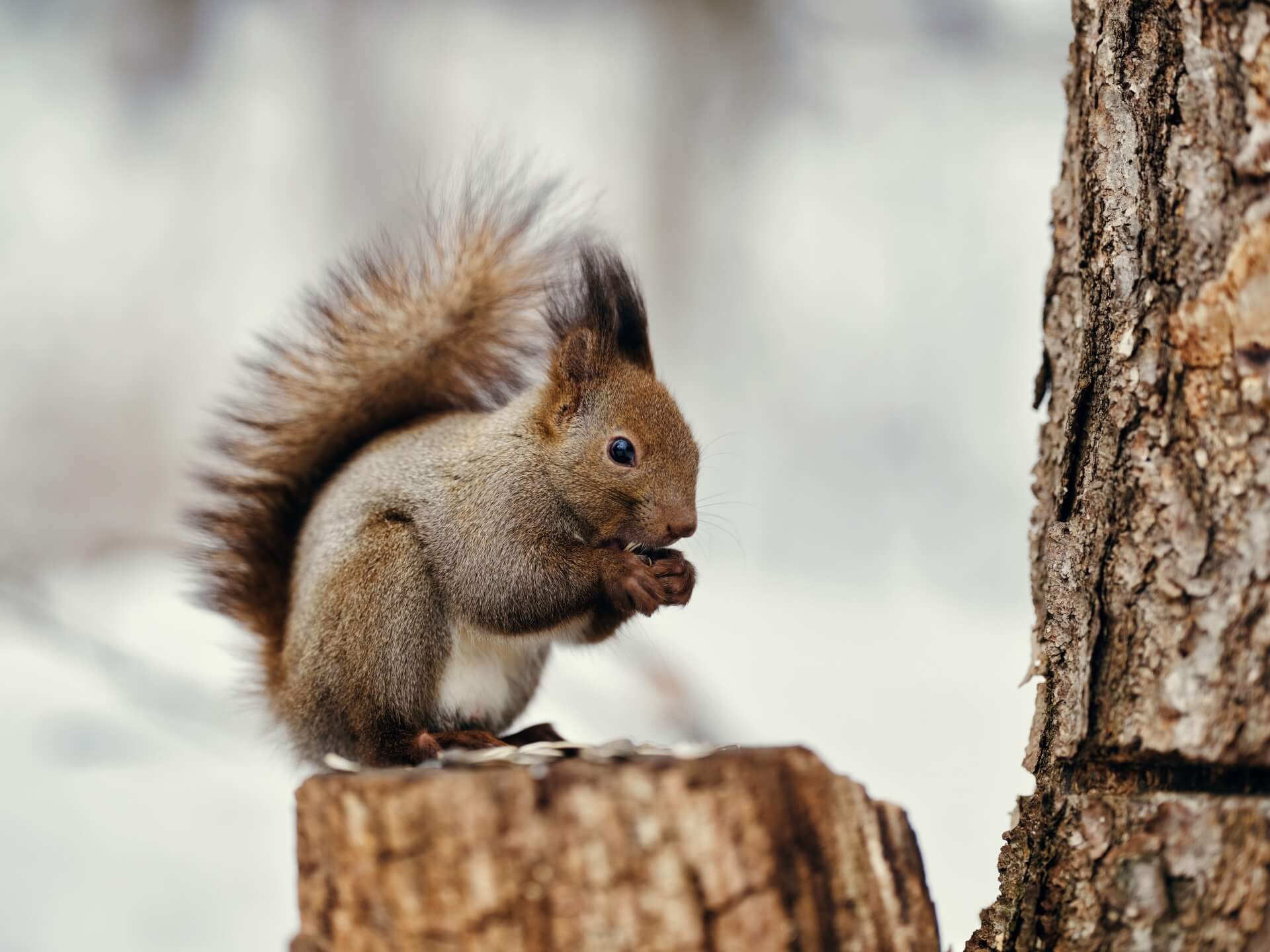
A common sight through the forests and wooded areas of Central Japan, Japanese squirrels are most active in the morning and mostly sleep through the day before reemerging again in the evening. They are well-adapted to life off the ground, able to jump between trees and building multiple nests high off the ground which they move between from day to day. Their coats change colour with the season being red-orange through summer and gradually turning grey to light-brown through the colder months of the year.
Japanese Red Fox
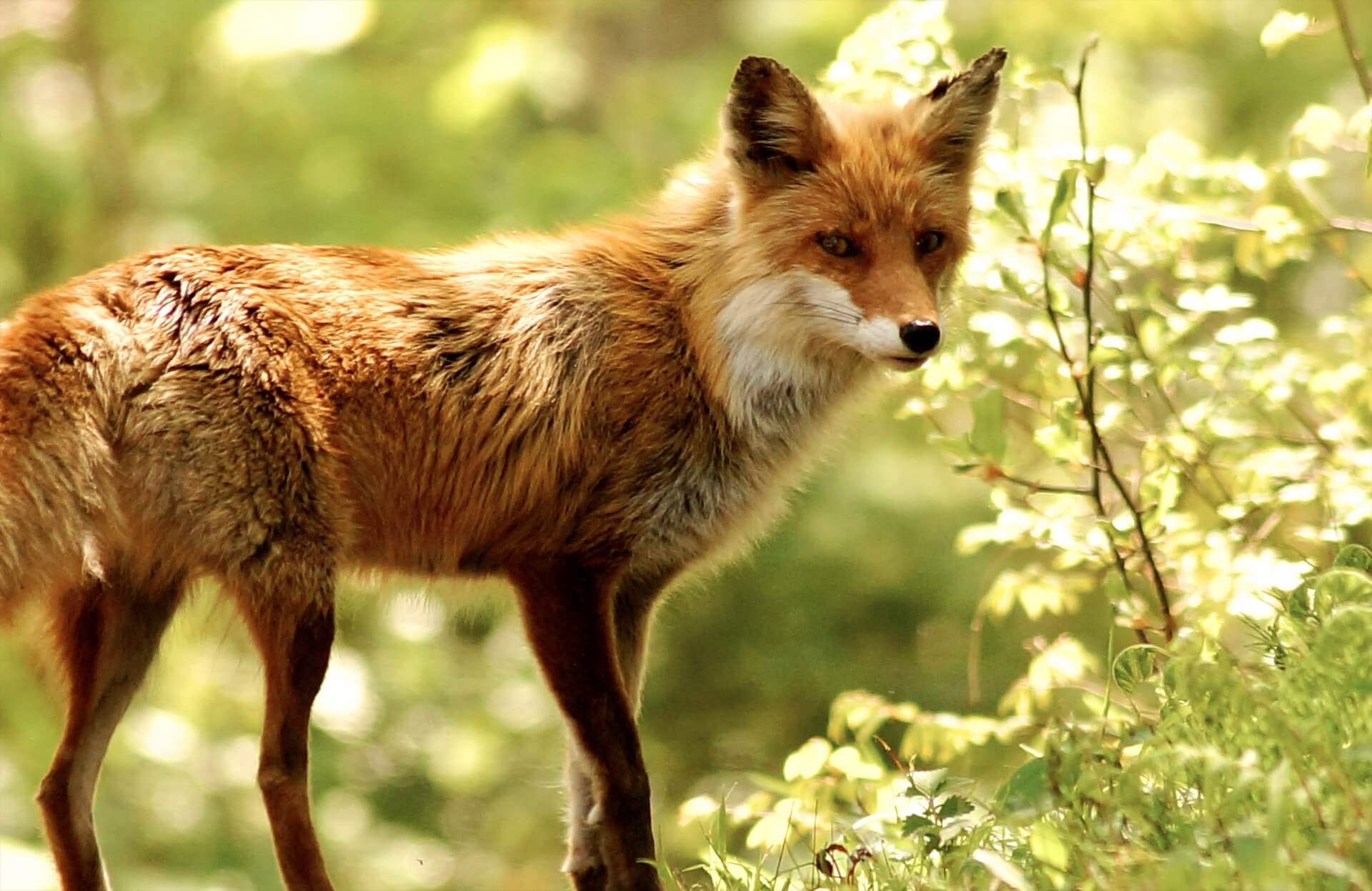
Another animal that plays an important role in folklore, the Japanese red fox or ‘kitsune’ is another shape-changer and a trickster spirit. While getting about in the shape of a fox you might encounter them anywhere. Highly-intelligent, foxes are far-ranging animals that eat anything from insects and earthworms to fruit, berries or even small rodents. Foxes occupy a wide range of habitats from living discretely in urban areas, to farmland and wilder regions including national parks.
Stoat

Known as ‘okojo’, Japanese stoats are a species of weasel occupying sub-alpine regions i.e. habitats over 1,500 metres above sea level. Their coats remarkably seem to entirely change colour between seasons, from dark brown with a white underside during summer to almost completely white in winter.
Rock Ptarmigan
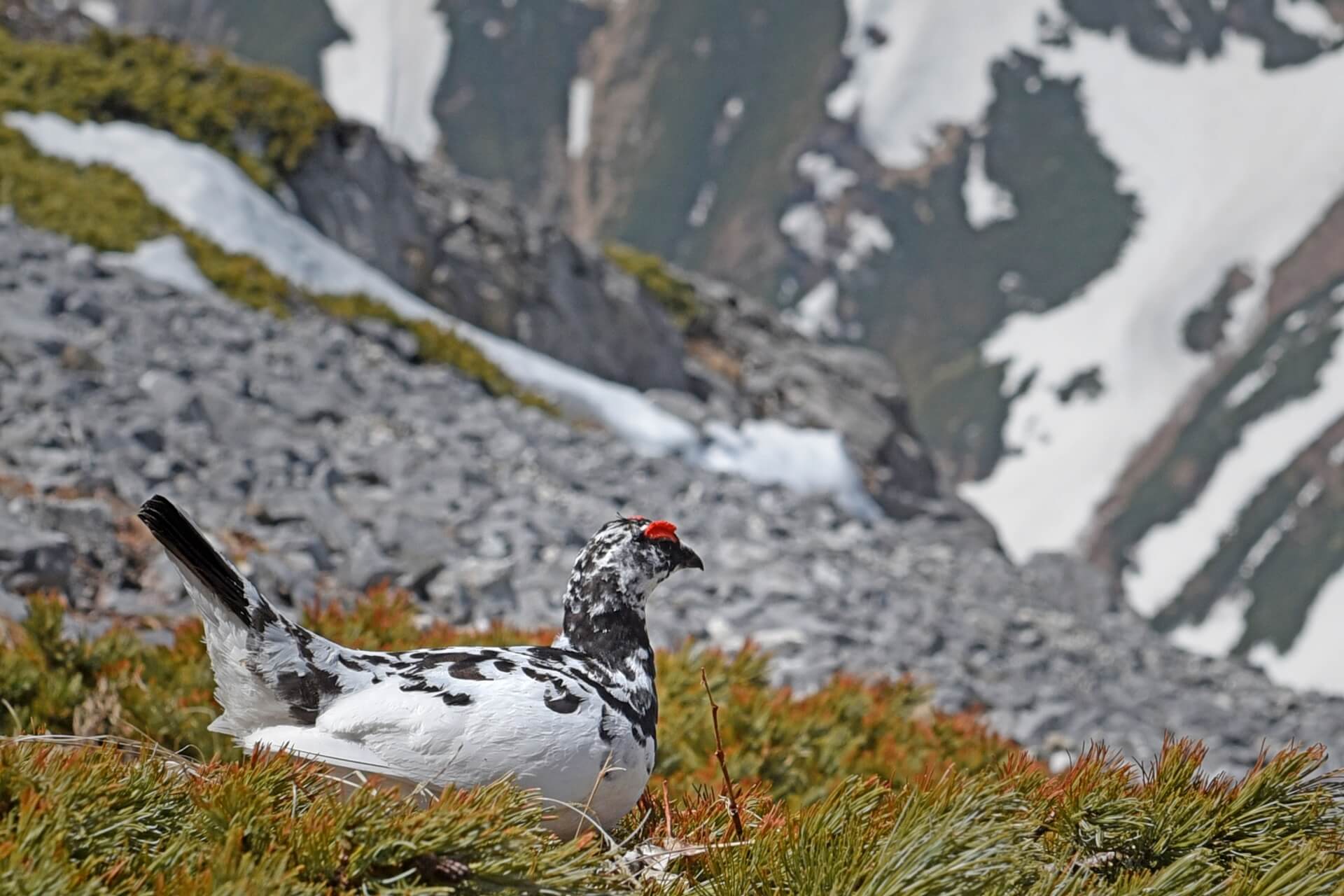
Called ‘raicho’ in Japanese, rock ptarmigans are found in alpine areas in Central Japan including around the summit of Mount Tate and the Tateyama-Kurobe Alpine Route. Translating as ‘thunderbird’, raicho were traditionally regarded as messengers of the gods and as a result, were not hunted. To this day raicho are not afraid of humans and will wander up to you and seemingly pose for photos, seemingly as interested in us as we are in them. Their plumage changes through the seasons, coloured brown in spring and summer and white in winter. Occupying the cold upper areas of the mountains, raicho hibernate in winter before re-emerging as the snow melts in winter.
Green Pheasant
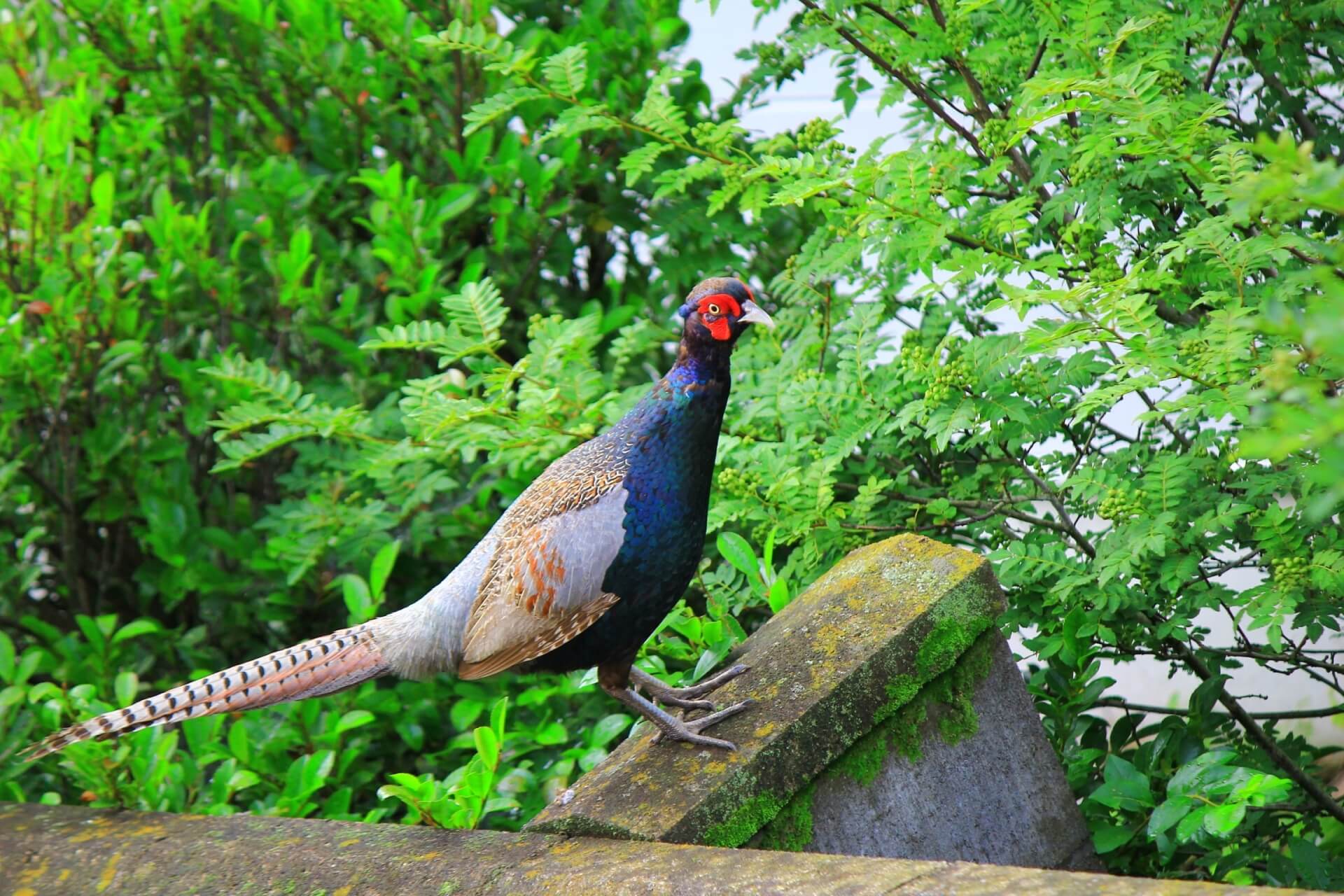
The national bird of Japan, the ‘kiji’ or green pheasant is commonly found in Central Japan through forested areas, farmlands, grasslands and in parks. Sporting dark green plumage on its breast, lower neck and sides, the wings and tail are a mix of brown and grey with red, black and blue plumage on the upper neck and head. The female pheasant is a more subdued mix of brown and grey. One of around thirty games species in game, the green pheasant can be hunted.
Golden Eagle
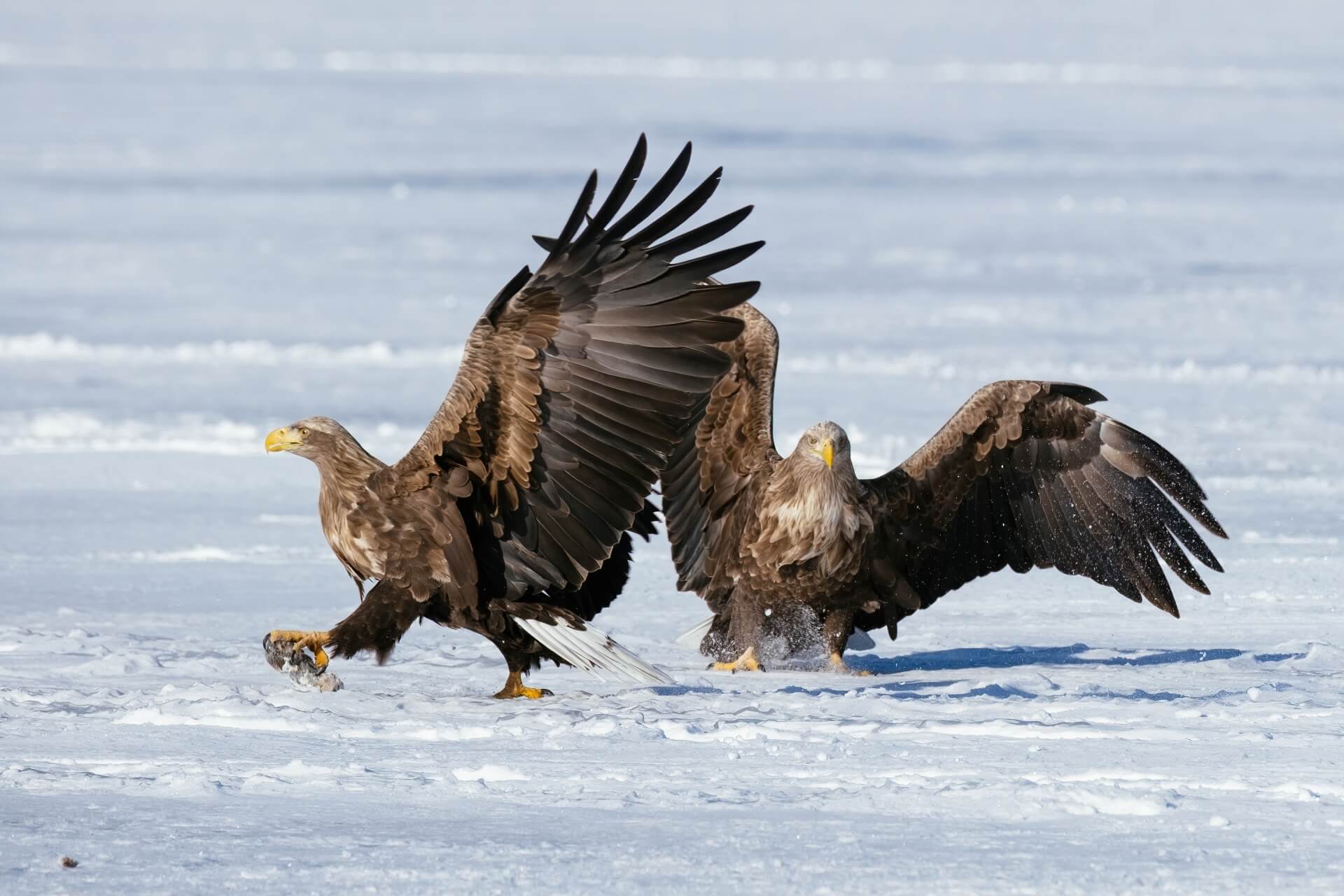
The beautiful golden eagles of Japan can be found from Hokkaido in the north to Kyushu in the south, spanning the entire expanse of Japan’s four main islands. The diverse ecologically of Joshinetsu Kogen National Park provides the eagles with an ideal environment with plenty of prey to hunt at all times of year.
Other Birdlife
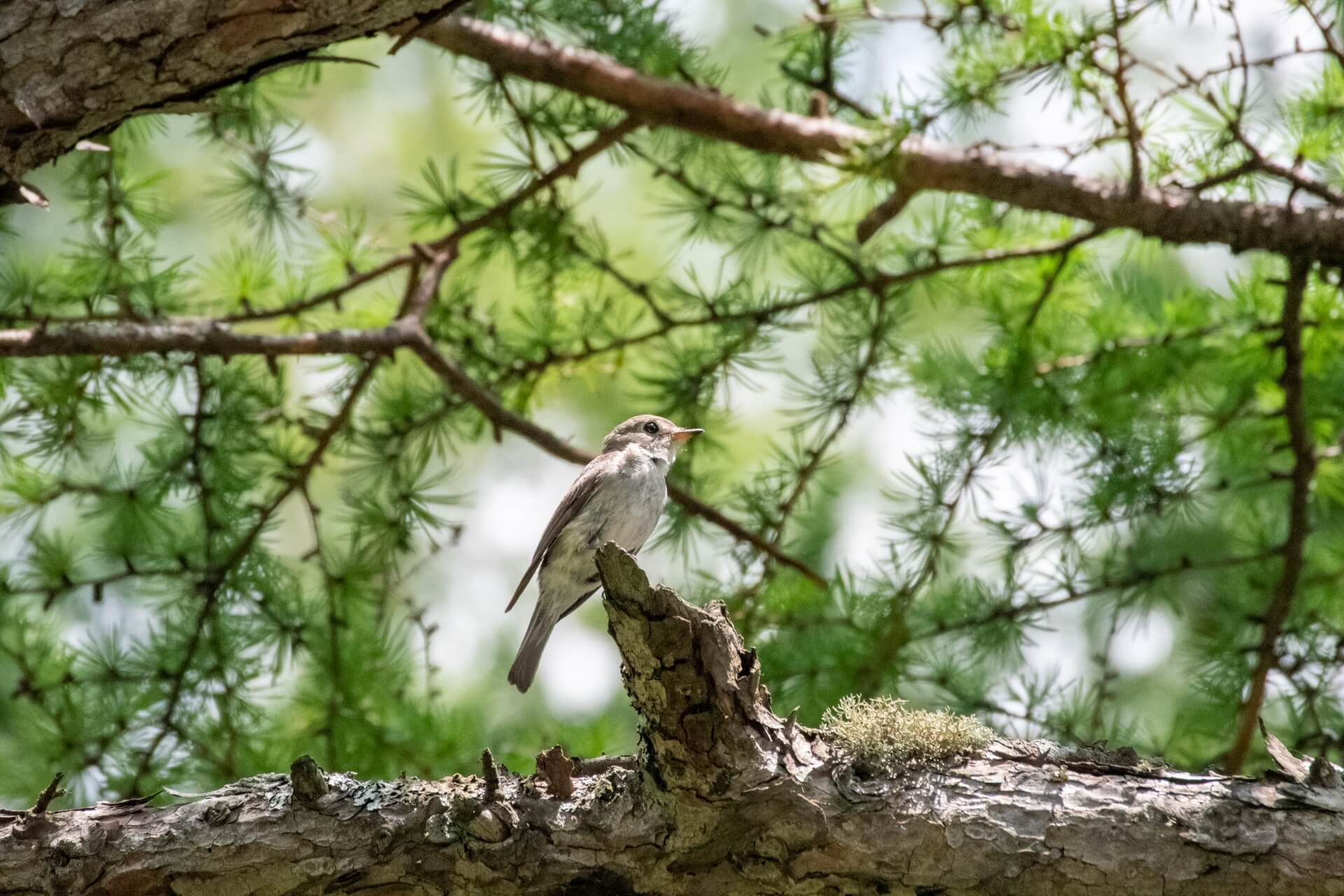
Japan has numerous species of endemic and migratory birds including wagtails, forest doves, woodpeckers, owls, eagles, hakws and more. Late-spring to autumn are the best seasons for the twitchers out there.
2 / RECOMMENDED WILDLIFE EXPERIENCES
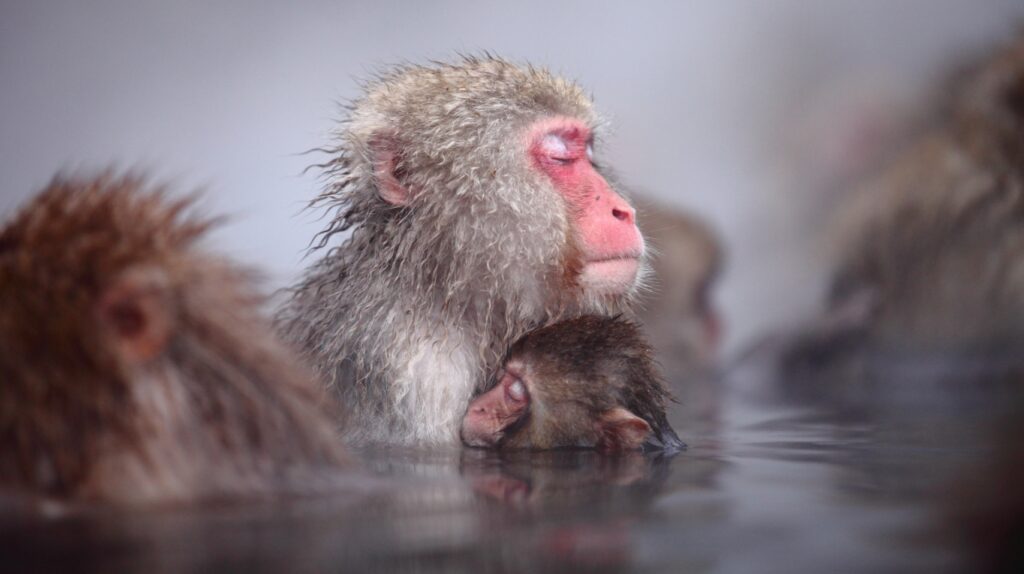
A region of open landscapes including multiple large national parks, Central Japan is one of the best areas in the country for enjoying the native wildlife. Here are our recommendations of the best wildlife experiences in the region:
Jigokudani Monkey Park / all year round
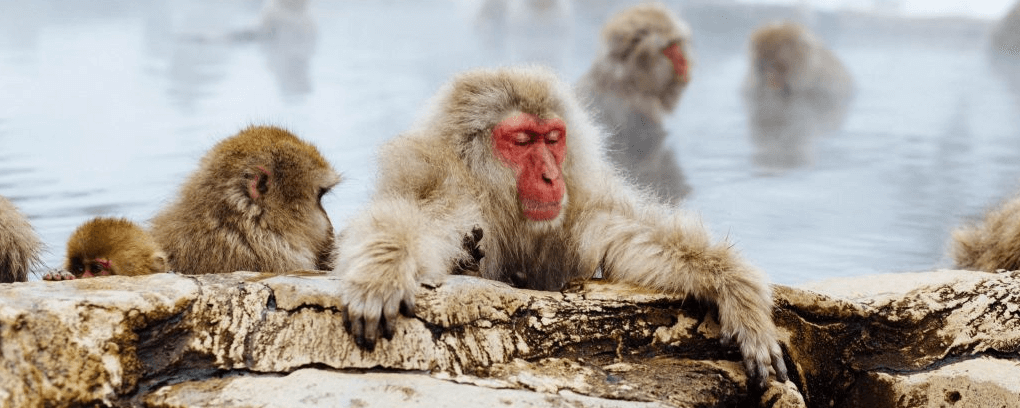

Located around 50-minutes from Nagano Station, the Jigokudani Monkey Park home to Nagano’s famous hot spring-loving monkeys. Most famous for their antics in winter, the monkeys – Japanese macaques to be exact – in fact come to the park all year round. The park is located in the foothills of Joshinetsu Kogen Natioanl Park, an area through which this troop and many others freely move. The troop that ventures into the park are indeed wild and with no barriers between the monkeys and visitors, a visit to the park is a unique opportunity to get-up close to these curious creatures.
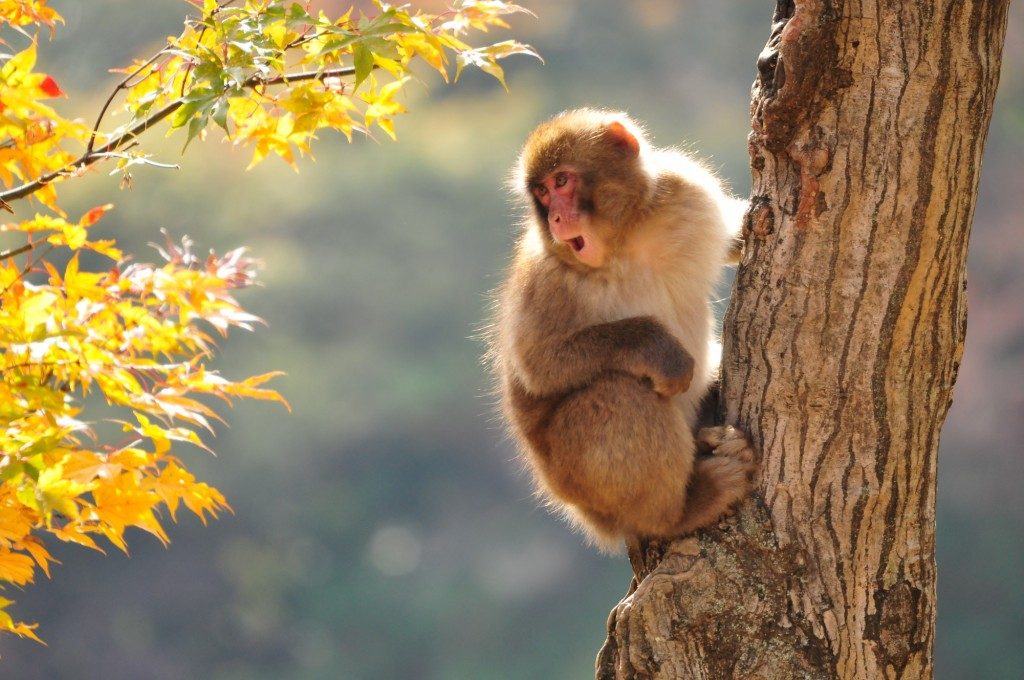
Operating all year round, we offer a range for group tours combining a visit to the park with other great regional destinations or should you prefer, a private tour with a fully-customisable itinerary. Click on the banner above or head straight to our ‘Tours’ page to start planning your trip to the monkeys.
Shiga Kogen Highlands / best: June to November
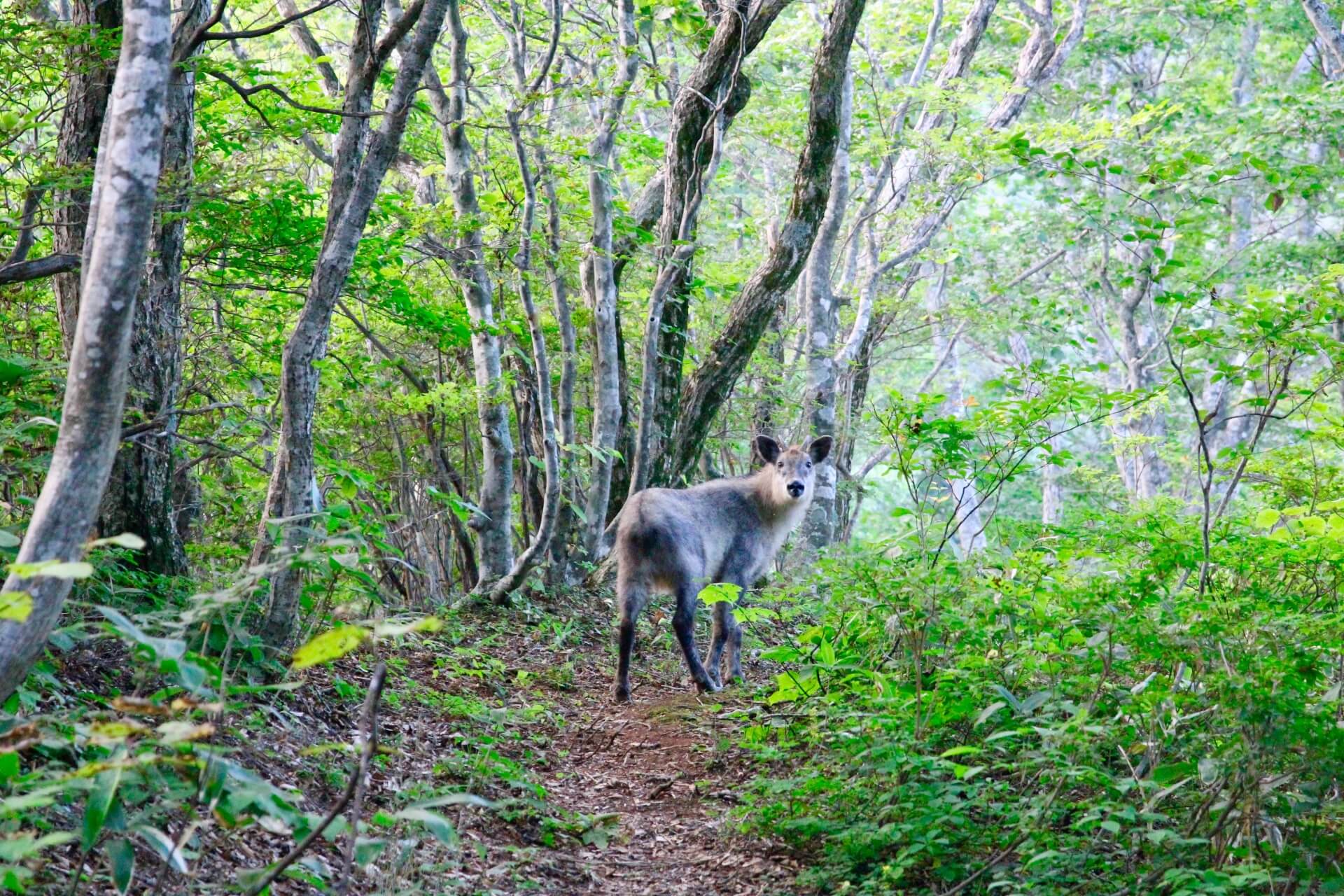
Ascending into the mountains above the monkey park, visitors have access to Shiga Kogen Highlands. Covering an area of around 30,000ha/ 300km², Shiga Kogen is an alpine area of multiple mountain peaks, mixed forests, ponds, lakes and great walking trail. The area was declared a UNESCO Biosphere Reserve in 1980 in recognition of the importance of the area , which is home to an array of animals including monkeys, deer, bears and birdlife including golden eagles.
Joshinetsu Kogen National Park / best: June to November
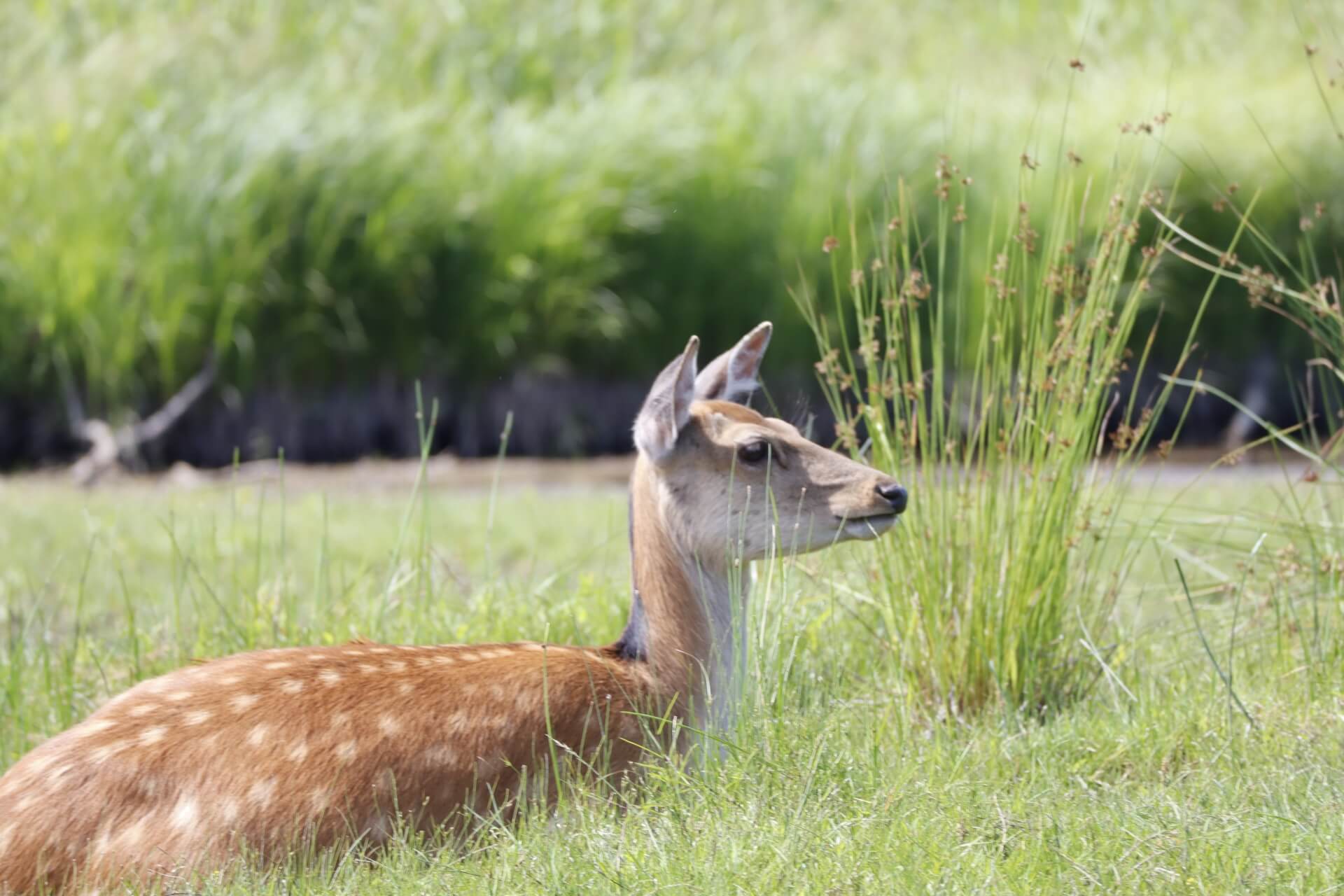
Shiga Kogen Highlands falls within the more expansive Joshinetsu Kogen National Park. Stretching across Nagano, Niigata and Gunma Prefectures, Joshinetsu Kogen is Japan’s fourth largest national park at 148,194ha / 1481.94km² in size. The park is similar in character to Shiga Kogen with many peaks and two of Japan’s most active volcanoes – Mount Asama and Mount Kusatsu-Shrine – falling within its boundary. Unsurprisingly a diverse range of wildlife exists within the national park with visitors able to see everything animal listed above.
Kamikochi / April to November
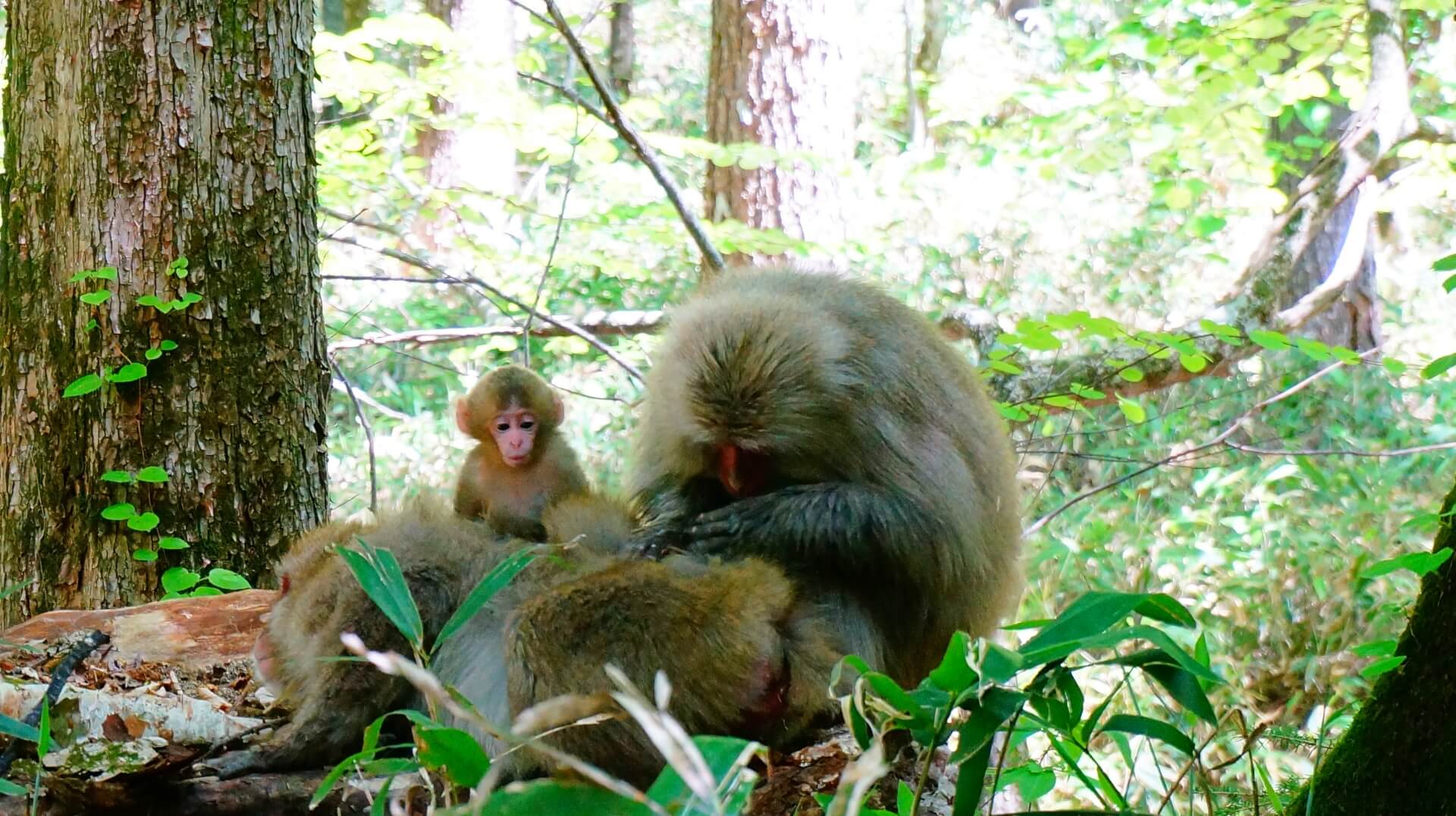
Located approximately 50km to the west of Matsumoto City, the stunning alpine valley of Kamikochi sits within the Chubu Sangaku National Park and beneath the peak of Japan’s third tallest mountain, Mount Hotaka. Stretching 18km in length, the valley lies between 1400 to 1600 metres above sea level and follows the Azusa River through a mixed landscape of waterways, mixed forest and brushland before the mountains rise above the tree-line. Visitors to Kamikochi can enjoy a diverse range of wildlife including monkeys, kamoshika, black bears and plenty of birdlife including the ever-curious raicho.
3 / RECOMMENDED BIRD-WATCHING EXPERIENCES
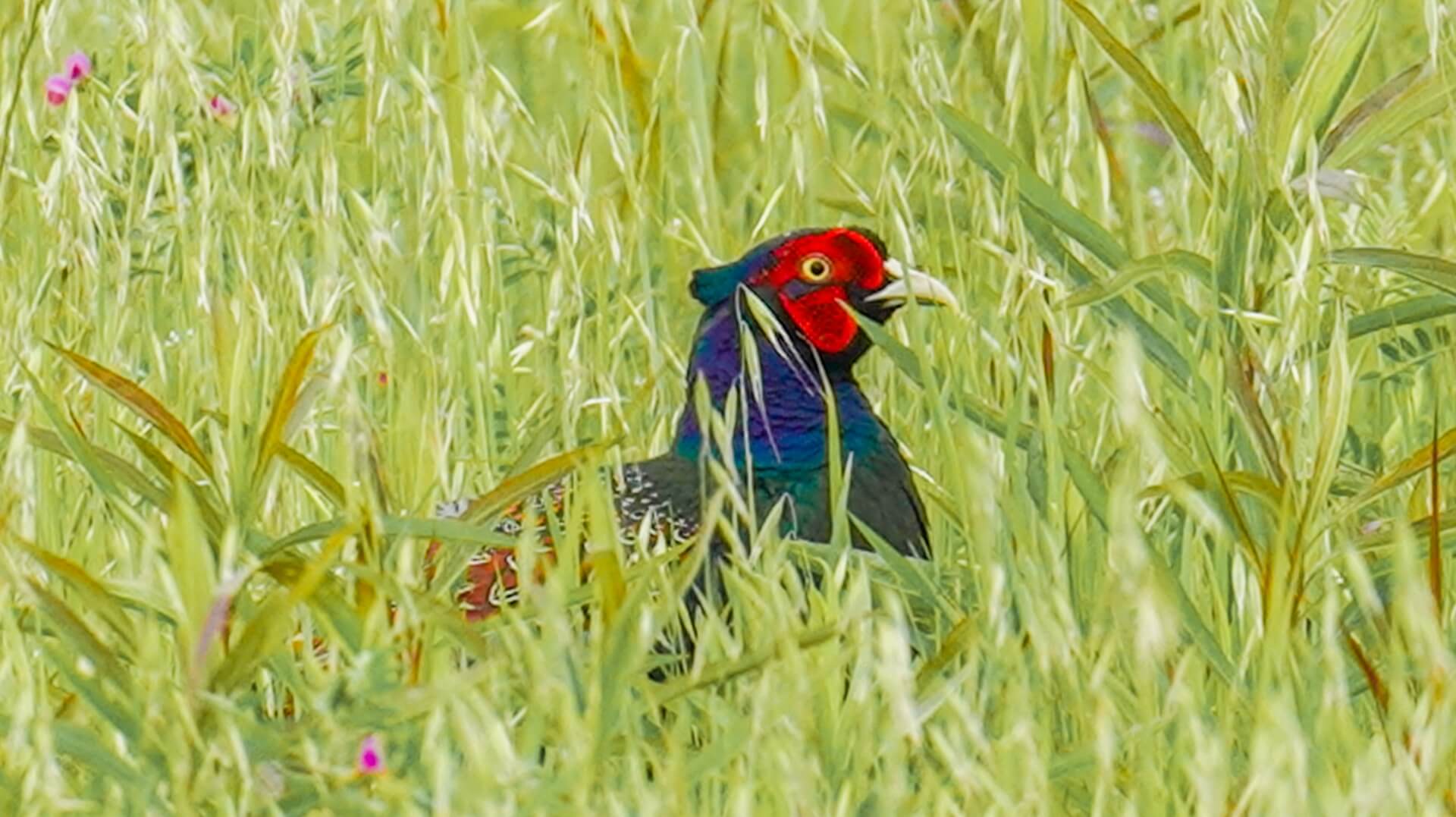
For the twitchers out there, Central Japan has some excellent bird-watching spots including:
Siberian Swans of Gohoden Yusuichi, Azumino / October to May
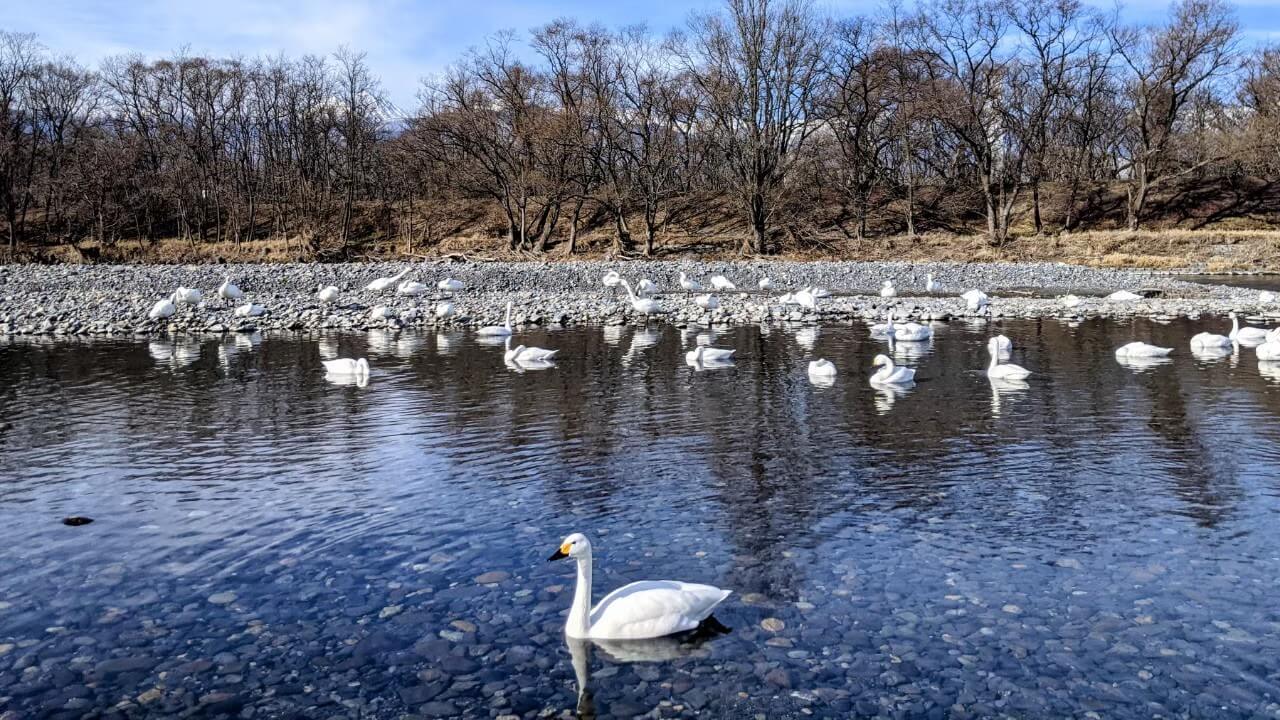
Migrating to Japan each winter to escape the bitter cold of Siberia, hundreds of swans descend upon the rural enclave of Azumino, just outside of Matsumoto. The swans typically arrive in October and stay as late as May, with December to February being the most reliable time to see them. While there, the swans are joined by hundreds if not thousands of ducks, including lots of beautiful varieties, that also seek refuge from the cold and offers one of Central Japan’s best wildlife photography opportunities.
Karuizawa Wild Bird Sanctuary / all year round
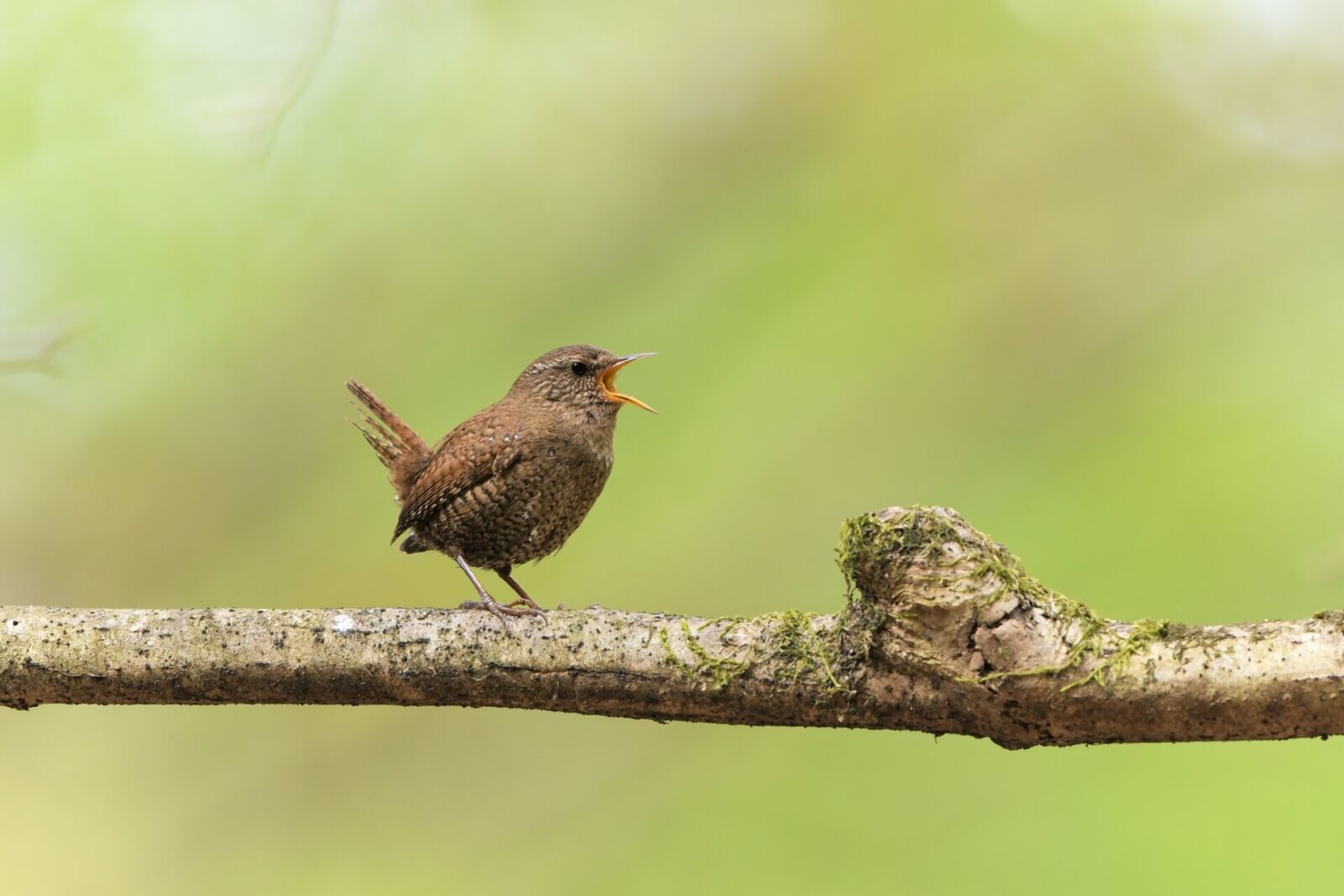
Located in the resort town of Karuizawa – the southern gateway to the national park – the Karuizawa Wild Bird Sanctuary is one of four such locations in Japan. Covering around 100 hectares, the protected forest is home to at least eighty species of bird and forty species of mammals. The species are too many and diverse to list here but include native pheasants, woodpeckers, wagtails, owls and many, many more.
Togakushi / best: June to November
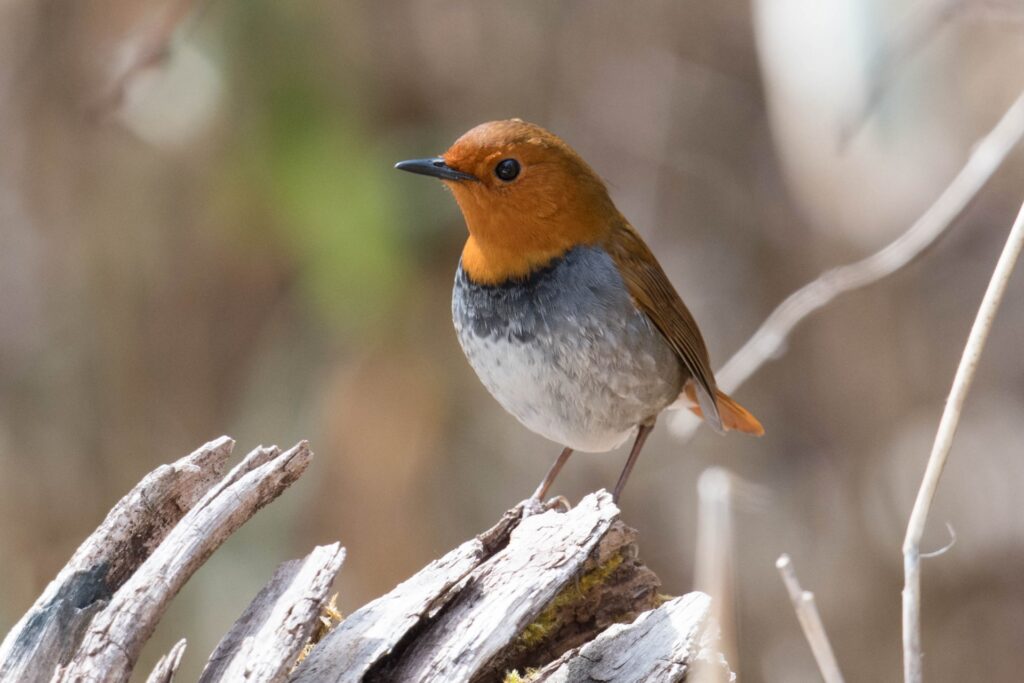
Best-known for its important Shinto shrines, ‘soba’ (buckwheat noodles) and autumn colours, Togakushi is a fantastic all-year-round destination sitting quietly within the boundary of Nagano City. Among Japanese birdwatchers, the area is well-known as one of the best areas in the region to enjoy and photograph birdlife including more than 120 species known to inhabit the mountain forests. The trails leading through the Togakushi Forest Botanical Garden are regarded as the best spot to enjoy the varied birdlife along with other animals including deer.
The area is frequented by black bears, particularly around dusk when most people have left the area. It’s nothing to be alarmed about and shouldn’t stop you from going but it is worth noting. You won’t miss the signs there warning you. For twitchers, the best time to visit is from June to November… before winter takes hold.
Tateyama-Kurobe Alpine Route / April to November
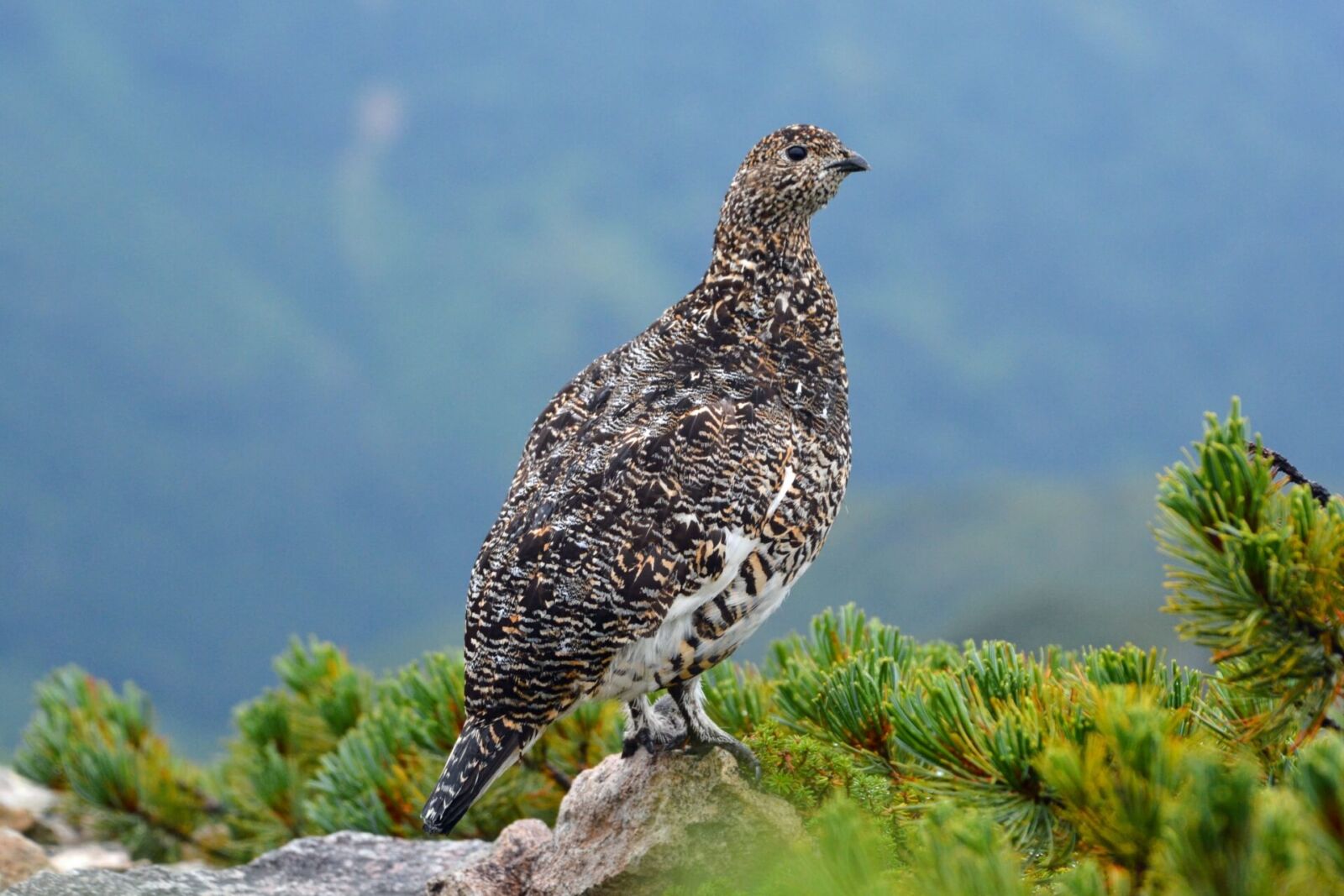
Open from mid-April until mid-November, the Tateyama-Kurobe Alpine Route is one of Japan’s most iconic destinations. Known as the ‘Roof of Japan’, the dramatic alpine landscape is inaccessible through winter due to the massive snowfall it is subject to. As spring takes hold and the snow begins to recede, a road is carved through the ice creating the fabled Snow Walls of Tateyama-Kurobe. Towering 20 meters above the road, this is tone of Nagano and Japan’s most iconic sights. As the weather continues to warm and summer arrives, the snow will slowly melt revealing a beautiful alpine landscape. Trails lead away from Murodo Station and offer visitors outstanding hiking opportunities including to the summit of Mt Tate – one of Japan’s three sacred mountains. In autumn, the landscape transforms into a mosaic of amber, red, yellow and brown with the changing leaves.

This is the domain of the ‘raicho’ or ‘thunderbirds’, messengers of the gods and strangely curious about the humans ascending high into the mountain realm. Seemingly unfraid of us, you can get very close to the raicho and as they dotter about on the ground, happy to pose for photos set against a spectacular alpine backdrop. This is one of Central Japan’s most iconic and rewarding experiences.
4 / RECOMMENDED HORSE-RIDING EXPERIENCES
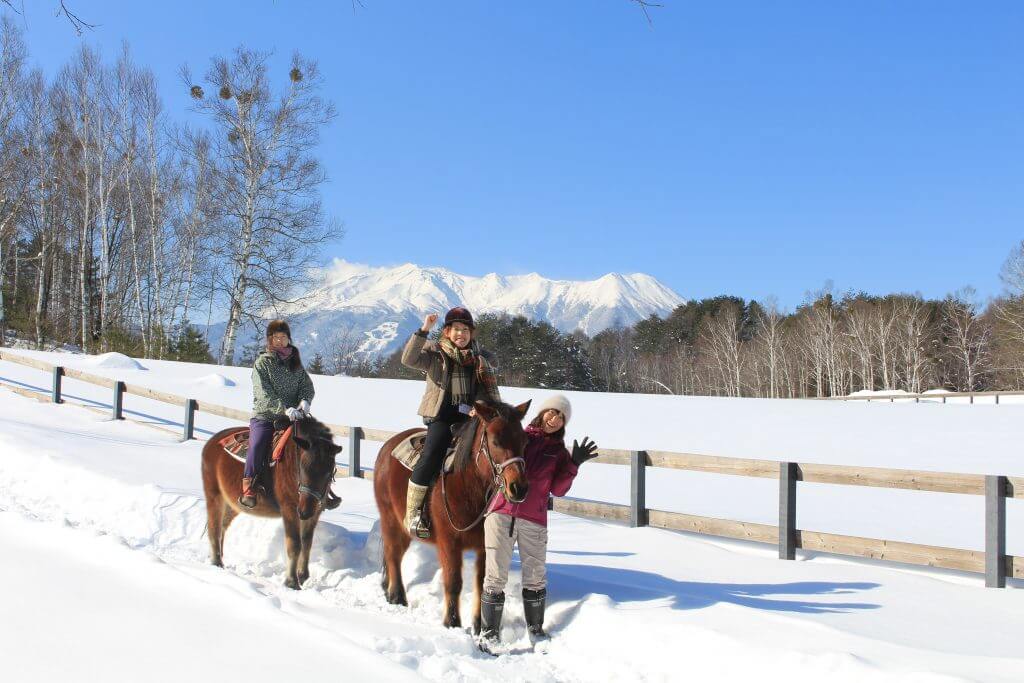
While many people might not associate the country with horse-riding, Japan has a strong tradition of horse-riding. Indeed horse racing is a hugely popular sport in Japan with Japanese horses competing in and winning major races all around the world.
We apologise that at this time we do not have any horse-riding activities to offer however we hope to update this information shortly.
5 / RECOMMENDED FISHING EXPERIENCES
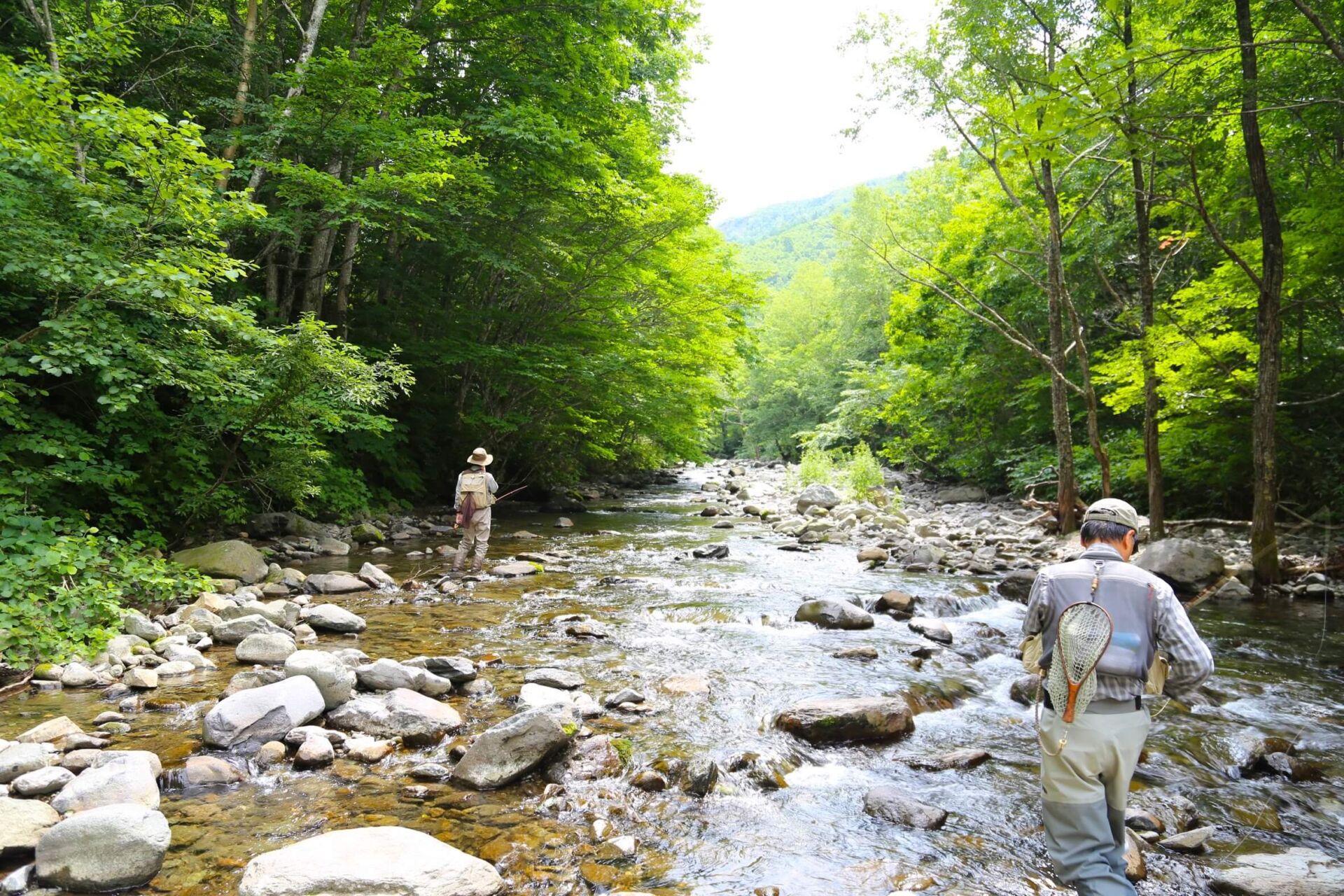
Fly-fishing in the alpine rivers of Nagano and Central Japan is a popular past-time for many Japanese and any enjoyable activity for international visitors wanting to enjoy the beautiful landscapes of the region.
We apologise that at this time we do not have any fishing activities to offer however we hope to update this information shortly.
6 / BOOK WITH US! NAGANO’S NO.1 TOUR & CHARTER OPERATOR
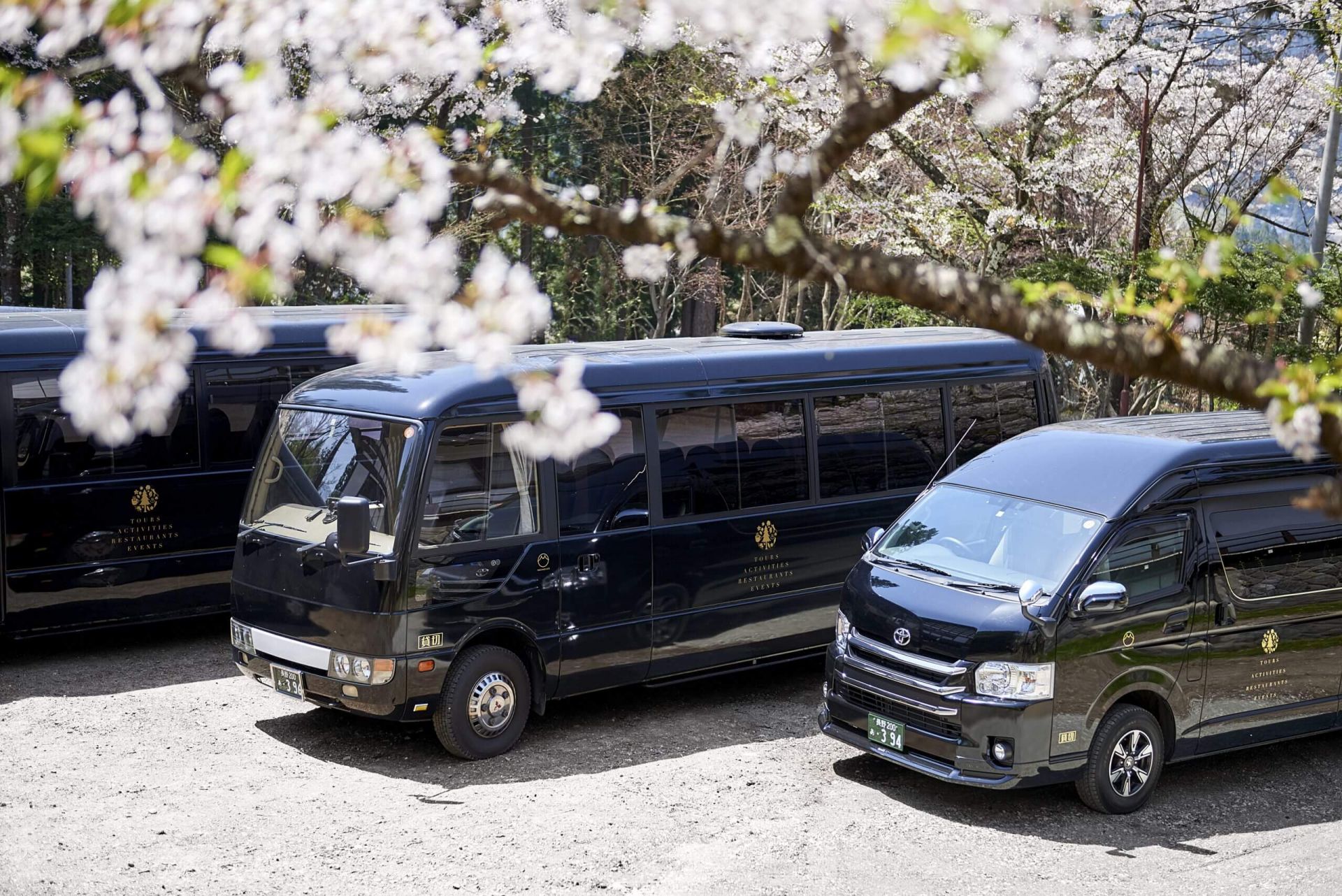

Based in Nagano and operating all year round, we are Nagano’s No.1 tour and charter operator. We have the local knowledge of where to go, when to go and what to do when you’re there to make sure you get the most out of your adventure in Central Japan! As a registered travel agent we can arrange wildlife experiences and tours, transport, accommodation and inclusive packages. So no matter what you’re looking for, we’ve got you covered including getting you to the best outdoor destinations and events in the region.

For guests wanting to access these destinations in the comfort of their own transport, we can arrange a private tour or charter customised to fit your needs, starting and ending at any destination in the region. Our drivers and vehicles are fully certified, allowing us to transport you to and from your preferred destinations in combination with any activity that suits your schedule. All vehicles are fitted with a protective screen – separating the driver from passenger and luggage area – and our drivers wear protective masks, allowing you to move between your destinations in comfort and safety.
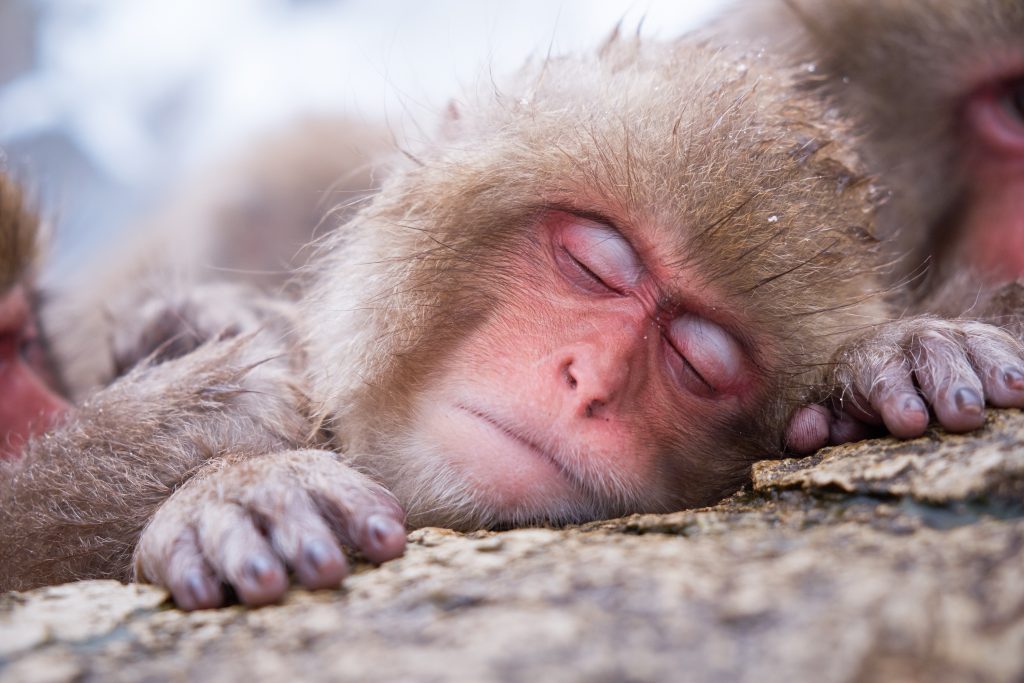
We can arrange both private tours with an English-speaking guide or a private charter, including a private vehicle and driver but without a guide. We’d love to be part of your adventure in Central Japan and help you discover even more!
Why choose us?
Awarded a 2019 TripAdvisor Travelers’ Choice Award for our 1-Day Snow Monkeys, Zenko-ji Temple & Sake Tour – recognised as one of the Top 10 Experiences in Japan – we have the local knowledge and experience to help you get the most out of your time in Nagano and Central Japan.
Got a question about visiting Nagano and Central Japan? Contact us and let’s get planning together!



